










Traverse City Office 236 1/2 E. Front Street, #26 Traverse City, MI 49684 231-943-6988
Main Office 5931 Oakland Drive Portage, MI 49024 269-385-5888 or 888-777-0216
• We uphold a Fiduciary Standard and work with clients on a fee-only basis.
• We do not receive commissions, kick-backs, or soft dollars from product sales, eliminating inherent conflicts of interest.
• Our team of professionals holds designations and degrees such as CFP®, CFA, CPA, MBA, JD, and PhD.
• Charles received his MBA from the Kellogg School of Management - Northwestern University, his MA in Economics from WMU, and Executive Education from Harvard Business School and Columbia University. Charles Zhang, CFP®, MBA, MSFS, ChFC
• Ranked #1 on Barron’s list of America’s TOP Independent Advisors for 2024. Charles has achieved the #1 ranking three times within the past four years.*
• Ranked #4 in the nation on Forbes’ list of TOP Wealth Advisors and is the highest-ranking Fee-Only Advisor on the list.*
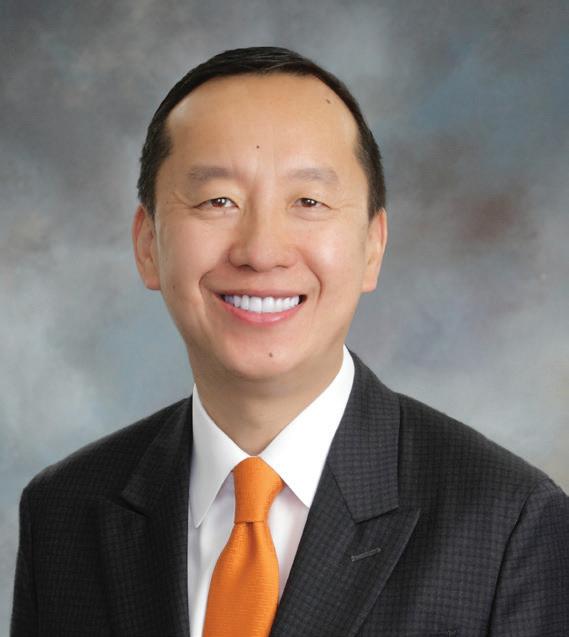
20Fathoms in Traverse City offers a new opportunity for Native American entrepreneurs. IndigiPitch is a pitch competition that will showcase Michigan’s vibrant Native American entrepreneurship and startup community. “IndigiPitch will be a very special evening for the entire community,” said Shiloh Slomsky, tribal liaison and CFO at 20Fathoms. “This is an opportunity for Native American entrepreneurs to showcase their work, compete for cash prizes and meet supportive individuals. But we’re doing it our way at this event, using our voices and traditions to create an evening that inspires, educates and uplifts.” Entrepreneurs are invited to apply (bit.ly/apply-indigipitch) by Oct. 13 to pitch and/or to secure a vendor booth at the event slated for Dec. 5 at Odawa Casino in Petoskey.
Michigan Auto Law has opened an office at 3347 W. South Airport Rd., Suite B, in Traverse City. The firm’s practice areas include car and truck accidents, motorcycle accidents, personal injury and no-fault insurance law. It has offices in Detroit, Ann Arbor, Grand Rapids, Farmington Hills, Flint and Sterling Heights.
The 11th annual Northwest Michigan Housing Summit hosted by Housing North is set for Oct. 27-28 at the Hagerty Center in Traverse City, featuring community leaders, housing agencies, financial institutions and other partners all focused on expanding housing solutions across the region. The theme for this year’s summit is “Rooted in Community Housing Solutions for Collective Impact.” Norm Van Eeden Petersman, director of Movement Building at Strong Towns, is the keynote speaker; housingnorth.org/nwm-housing-summit.
TBA Credit Union in Traverse City recently made its annual contribution to Traverse City Area Public Schools. This year’s $16,100 donation directly supports elementary students by providing dryerase board markers for classroom use. Funds will also provide student opportunities through LEAP and sponsor signage at Thirlby Field.
NMC’s University Partners CMU, Davenport University, Ferris State University, Grand Valley State University, and MSU’s Institute of Agricultural Technol-
ogy have relocated from the University Center campus on Boardman Lake to the James Beckett Building on the Front Street campus to help the partners better serve NMC students. The UC campus has been renamed the Boardman Lake campus and for now remains the home of NMC’s business and human resources offices, Extended Education & Train ing, the NMC Foundation and Strategic Initiatives office.

Plans are taking shape for a new mixeduse development at the corner of State and Cass next to The Omelette Shoppe in downtown Traverse City. In addition to 44 income-restricted apartments on the upper floors, the ground floor is envisioned to be a 4,000 square-foot market featuring fresh produce seven days a week from local farmers, a hot/cold deli, coffee bar, rotating food stalls, grocery staples and fresh sushi. Cherry Capital City Market would provide access to local farmers seven days a week in conjunction with the Sara Hardy Downtown Farmers Market. Details of that partnership are still being finalized, according to DDA Executive Director Harry Burkholder, which will define how active of a role the DDA/Downtown Traverse City Association plays in operations. The partnership includes Harvest Food Systems of Tamarack Holdings, a family of local food companies that includes Cherry Capital Foods, Great Lakes Farm to Freezer, and Food For Thought
NMC has been named a co-principal investigator on a $873,634 National Science Foundation grant led by Grand Valley State University (GVSU). The grant will create a six-week training program focused on artificial intelligence-enabled deployment of autonomous underwater vehicles. Developed in collaboration with GVSU, training will be provided to 72 individuals in four different cohorts. This is the second National Science


















Foundation grant awarded to the region for water-related work this year. Earlier this summer, Traverse City startup Wave Lumina won a $305,000 grant supporting the research and development into the science underlying their pioneering product, a portable device that field tests for PFAS, or forever chemicals.

After 14 years in business in downtown Traverse City, Brilliant Books is closing its Front Street retail store. In an announcement discussing the closure, plans are for the website to remain operational and its Brilliant Books Monthly subscription service will be continuing. Founded by Peter Makin, the business first started in Suttons Bay in 2007 – with that location closing in 2013.
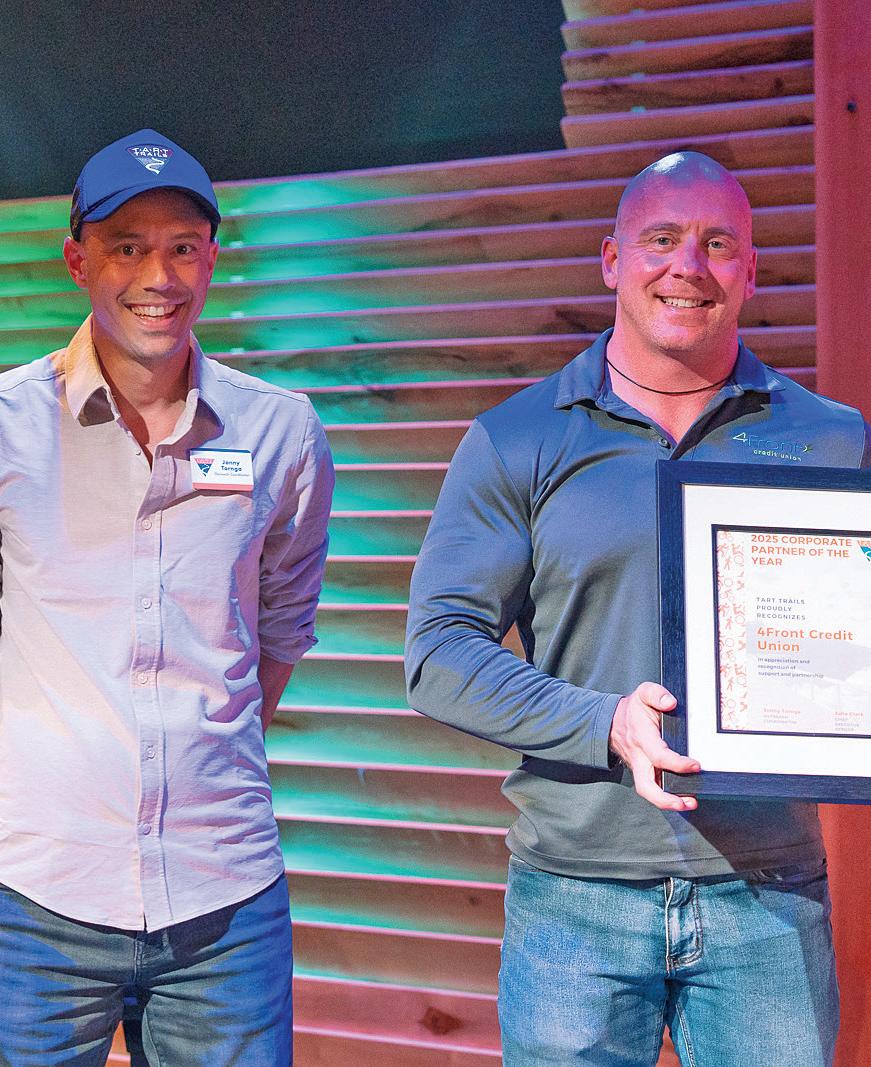
TART Trails recently held its annual celebration recognizing the people and partners who help make the trail network thrive. This year’s honorees included Mathew Cooke, Ambassador of the Year; Higher Grounds , Community Partner; 4Front Credit Union , Corporate Partner (pictured above); and Acme Township , Government Partner.

Pryde Athletics and Physical Therapy has opened at 707 Parsons Rd. in Traverse City specializing in combining physical therapy care with strength and conditioning programs to help athletes and others recover and perform at their best; prydeathletics.com/traverse-city.

The Festival Foundation announces its 2025/2026 board of directors. Newly appointed officers are: Kelli Mengebier, president (pictured above); Nikki Schweitzer, vice president; Max Anderson, immediate past president; Ian Hollands, treasurer; Brian Beauchamp, secretary. The Foundation also welcomed new board members Greg Maytas and Liz Petrella. Continuing members include Doug Dowdy, Peg Jonkhoff and Kevin Severt, along with Jessica Alpers, who will continue serving as the cherry industry liaison. Ex-officio members are John Lynch of Lynch Law and Festival Foundation CEO Kat Paye.
Venture North Funding and Development in Traverse City has added two individuals to its board of directors: Jennifer Rekasi, community development manager and vice president at Huntington Bank with more than two decades in the banking sector, and Jim Masters, a senior commercial portfolio manager for Fifth Third Bank, who has 29 years of financial services experience with 27 in the Traverse City market. Masters has served on Venture North’s loan committee since 2015.


Choose not just where you want to live, but how. Cordia offers countless opportunities for enrichment, inspiration, connection and personal fulfillment. Where would you like your next great chapter to take you? The choice is all yours.













If history teaches us anything, it’s that strong communities are built on strong foundations. Northern Michigan has long benefited from two pillars that have carried us through change and uncertainty: Munson Healthcare and Northwestern Michigan College. These institutions do more than serve. They sustain us. They shape the quality of our lives, the resilience of our economy and the character of our region.
As we look to the future, the question is not whether we value these institutions – everyone from business leaders to retirees knows their importance. The question is whether the policy environment in Lansing and Washington will allow them to thrive. Decisions made far from Traverse City are influencing the care we receive, the opportunities our learners pursue and the vitality of our workforce.
Employers cannot attract or retain talent if workers fear specialized care is hours away. Retirees, many of whom chose this region for its quality of life, would not have the same confidence if advanced medical care weren’t close at hand. And businesses themselves depend on the stability of a healthcare system that keeps employees healthy and productive.
Munson Healthcare’s regional network – spanning critical access hospitals, outpatient facilities, and specialized services – fills this role. Yet its ability to do so rests heavily on policy decisions beyond its control. More than 60% of Munson’s payments come from state and federal payors, who pay less than the cost of providing care, and more than 200,000 patients rely on Medicaid or Affordable Care Act
EDITORIAL & BUSINESS OFFICE
P.O. Box 4020 Traverse City, MI 49685 231-947-8787
ON THE WEB
tcbusinessnews.com
PUBLISHER
Luke W. Haase lhaase@tcbusinessnews.com
CONTRIBUTING EDITOR
Gayle Neu
gneu@tcbusinessnews.com
HEAD WRITER
Craig Manning
STAFF WRITER
Art Bukowski
COMMENTARY BY GABE SCHNEIDER
coverage. Regardless of one’s views on government’s role in healthcare, the truth is that it is already deeply involved. To complicate matters further, government reimbursement rates can change at the whim of policymakers. That reality makes state and federal engagement essential for the success of northern Michigan’s largest rural healthcare provider.
One policy that illustrates this tension is the 340B drug pricing program. This federal program requires pharmaceutical companies to provide discounted medications to hospitals serving large numbers of low-income patients, at no cost to taxpayers. Hospitals reinvest the savings in local services, from charity care to rural clinics to expanding outpatient and community services. Unfortunately, the program is under near-constant attack from pharmaceutical companies, which oppose legislative efforts in Lansing to add state-level protections while simultaneously working to weaken it nationally.
Another looming challenge comes from cuts enacted in the most recent federal budget reconciliation bill. As these reductions are fully implemented – along with the forecasted impact of tariffs – Munson Healthcare projects losses of more than $50 million annually over the next several years. While Congress included funding for a new Rural Health Transformation Program, those dollars will cover only a fraction of the shortfall. The Michigan Health & Hospital Association estimates the program will offset just one-sixth of Michigan’s cuts over the next decade. In addition, as federal funding for Medicaid shrinks, Michigan will face significant budget shortfalls, since Medicaid already accounts for half of the state’s Department of Health and Human Services budget.
CREATIVE DIRECTOR
Kyra Cross Poehlman
CONTRIBUTING WRITERS
Ross Boissoneau
Kierstin Gunsberg Rick Haglund
COPY EDITOR Becky Kalajian
WEB PRODUCTION: Byte Productions
MAILING/FULFILLMENT
Village Press
DISTRIBUTION
Marc Morris
SERVING
Grand Traverse, Kalkaska, Leelanau and Benzie counties
The challenges facing Northwestern Michigan College (NMC) are no less significant. If healthcare is our safety net, education is our growth engine. For employers, NMC is the single most important partner in developing the workforce they need. For retirees, the college offers cultural programming and continuing education.
But like Munson, NMC faces headwinds shaped by legislative debate.
One recurring issue involves the “three-legged stool” that has traditionally supported Michigan community colleges: one-third local tax revenue, one-third tuition and one-third state funding. Over the last decade, this balance has shifted. State support has grown slowly while inflation and aging infrastructure have increased costs, leaving students to shoulder a greater share. What was once a predictable budget process that gave colleges certainty about state support now often stretches well into the fiscal and academic year, putting investments in student success at risk.
Take, for example, the proposed Integrated Student Services Hub, which would transform NMC’s 60-year-old Osterlin Building on the Front Street Campus into a one-stop hub for admissions, financial aid, advising, counseling, international outreach, health and veteran services. This $8 million project should be cost-shared through the state’s college capital outlay process, but legislative delays have pushed the timeline back year after year.
And as we think about a foundation for the future, programs like Michigan Reconnect, dual enrollment and short-term training initiatives open doors for students of all ages: recent high school graduates, working adults and career changers
AD SALES
Lisa Gillespie lisa@northernexpress.com
Kim Murray kmurray@tcbusinessnews.com
Kaitlyn Nance knance@northernexpress.com
Abby Walton Porter aporter@northernexpress.com
Michele Young myoung@tcbusinessnews.com
COVER PHOTO
Megan Renae Studios
alike. Each is a proven strategy to help Michigan achieve its “Sixty by 30” goal of 60% credential attainment by 2030. Yet these programs compete annually for state funding, leaving their long-term future uncertain even as their value grows.
Munson Healthcare and Northwestern Michigan College have adapted to decades of change – economic downturns, technological disruption, demographic shifts. But no institution, no matter how resilient, can withstand a policy environment that steadily erodes its foundation.
The future of northern Michigan will be shaped by choices made today. Will federal and state lawmakers provide stable, predictable support that allows our hospitals and colleges to plan with confidence? Or will short-term cuts and policy shifts chip away at the structures that have sustained us for generations?
For businesses and retirees alike, this is not an abstract debate. It is about the kind of community we want to live in – not just today, but a century from now. Strong healthcare and strong education are not luxuries. They are the foundation on which northern Michigan has been built, and the foundation on which it must continue to grow.
Gabe Schneider is a consultant, policy strategist and founder of Northern Strategies 360. He lives, works and invests in Traverse City.
Correction: Kevin Query of Manitou Commercial Real Estate was listed as 39 years old in the September 40Under40 issue. He is 31. We apologize for the error!
The Traverse City Business News
Published monthly by Eyes Only Media, LLC P.O. Box 4020 Traverse City, MI 49685 231-947-8787
Periodical postage qualification pending at Traverse City, MI.
POSTMASTER: Send address changes to The Traverse City Business News, PO Box 1810, Traverse City, MI 49685-1810.
The Traverse City Business News is not responsible for unsolicited contributions.
Content ©2025 Eyes Only Media, LLC. All rights reserved.
EYES ONLY MEDIA, LLC






Ombudsman volunteers visit older adults in northwest Michigan’s nursing homes, homes for the aged, and adult foster care homes—offering a listening ear, friendly support, and a voice when it’s needed most.
We’ll guide you with step- by-step training, let you shadow a mentor until you’re comfortable, and offer a flexible schedule that works for you. Get involved like you would for your own loved one. Your presence matters more than you know.


By Art Bukowski
James Marsh (yes, he’s Jamie Marsh’s son) is the Chevrolet service manager at the Williams Auto Group in Traverse City. He joined the Williams team about a month ago and has been tasked with, among other things, boosting business at the oil change center at their main campus near the Grand Traverse Mall. We thank James for showing us around his space. If you have an idea for a From the Desk Of feature, email Art Bukowski at abukowski@tcbusinessnews.com.


1. I’m big into fitness, big into working out. I pack all my lunches, always have lots of fruits and vegetables. I go to the gym every morning before I come here. I still enjoy a good greasy burger on the weekends, but during the week I just try to stay in really good shape. It gives me more energy so I don’t feel lazy during the day.
2. That’s a hat from a yacht brokerage that I’ve used. I’m a big, big boater. I have a couple of different boats, and I keep one down in the marina. I pretty much live on that thing on the weekends, though unfortunately I’m pulling it out soon. Boating is probably my number one hobby.
3. I love music. And nobody likes the guy who says he likes every kind of music, but I literally do love all kinds. My playlist is anywhere from rave club to relaxing bluegrass country music. I’m all over the place.
4. I do embrace technology, but I can’t get away from the old school stuff like the big calculator. I haven’t got a calendar up in here yet, but I’m a big calendar guy too.
5. I’m a coffee freak. I drink a lot of it – probably too much of it. It’s Americanos every morning.
6. One of these is the National Oil and Lube News, which is dedicated to this industry. One of my tasks when I was hired was to really build up this quick service, and it has a ton of good information about the business. The other publication is from MAC Tools. We always want to have the best equipment here.
7. You might not be able to see it, but there are tire quotes on there. Part of trying to grow this department is pushing tire sales and other upgrades. Before, when we’d tell someone they might need tires, we couldn’t actually do them. What I want them to do now is leave with a quote in their hands so the team in the other building can get them those tires. It’s all about building the business.
8. We’re in the process of completely revamping the oil change center. All the windows are getting replaced, we’re getting all new signage, some new paint. We want to level it up like crazy and be the number one quick lube. Some other places in town have closed, so we see a real opportunity to move up in the market.
By Art Bukowski
You have the dream, the plans, the time and the energy.
But what about the money?
Traverse City has long been a commercial banking hub for all of northern Michigan. Thousands of folks work at regional offices of major corporate banks or at one of many smaller, local “community” banks throughout the area.
The TCBN connected with several familiar faces in the commercial lending world to see what’s going on in this fast-paced (and very competitive) market.
MICHAEL CARUSO
Nicolet Bank
Michael Caruso started with Comerica Bank in Detroit back in 1989, and he’s been banking in Traverse City for almost 12 years.
He speaks proudly about what it means to him to help businesses – and by extension, people – with his work.
“It’s the client experiences, no question about it. The client experiences are what keeps you going in this business,” he said. “Touring the plant. Seeing their excitement. Putting together packages for them that no one else really would put together the same way.”
Caruso says the “smartest” lenders are transactional real estate lenders. Bring in a big strip mall, pad the portfolio with a $2 million outstanding loan and wash your hands of it. Maybe talk to the client once a year. Move on to the next thing.
“The less smart lenders go into the relationship side, and I say less smart because

it’s a tremendous amount of more work,” he said. “But one of the critical factors for me throughout my whole 35-year career has been to not be a transactional lender. My clients are pretty intensive, they’re all relationship based. That’s the side I gravitated towards.”
And Caruso leans in. He knows that being connected at the hip with his clients is good for everyone. Anticipation and planning always pays off.
“I communicate with these people continuously,” he said. “Talk to them if they have a problem. Make sure we’re ahead of the curve when they need to buy something or they’re looking for the next project…we want to always prepare them for the next step.”
Caruso feels lucky to conduct business in and around Traverse City, where he received a warm welcome that never quite wore off.
“I was a new guy in the market when I came here, so I knocked on an awful lot of doors. And I was just extremely impressed
with the friendliness of the people in this area,” he said. “People are happy to be here. They’re smiling when they wake up in the morning.”
It’s also a market that has a lot to offer, especially if you know where to look.
“This market has a really good, almost hidden, base of manufacturers, wholesalers and distributors. They’re all over the place, they’re really, really nice companies to bank, and they’re really nice relationships,” he said. “We are interested in as many of those as we can possibly get on the books.”
Asked about trends, Caruso had plenty to say about interest rates and other matters. He also pointed to a note on the wall that reminds himself to talk to every single client about fraud protection.
“In my first 20 or 25 years of doing business, there was one case of fraud that I remember. And nowadays, we have a couple a month,” he said. “Somebody getting scammed, somebody called and
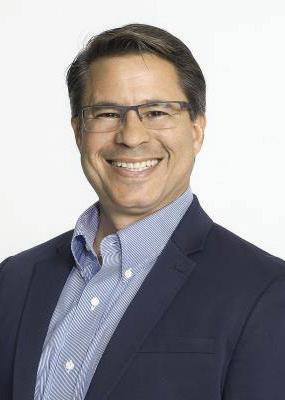
said they were from someplace. It’s just constant, and it’s time consuming. Is Sam in distribution clicking on a link and letting someone in your back door?”



West Shore Bank
Lori VanAntwerp has been in the game 30 years, the last three of which at West Shore Bank in Traverse City.
She says she loves finding solutions for her clients, of whom she has an immense amount of respect and admiration. It takes a lot of guts to open or expand a business, she said.
“I’m not a risk taker, which is probably why I’m a banker,” she said. “So to see people step out and follow their passion and make money and do good things for the community, I just love it.”
VanAntwerp, like some others on this list, do more than loans. Full-service commercial banking at West Shore means she’s ready to help with anything and everything.
“It’s really fun to see how we can find some banking solutions, whether it be loans or making their life easier with treasury management, ACH, paying bills and paying their employees,” she said. “If we can make their lives easier in that area, then they can focus on what
Honor Bank
Cory VanBrocklin broke into the business as a parttime teller at Empire National Bank in 1991. He rode a wave of buyouts and mergers for many years before coming to Honor Bank in 2021.
“Small-town community banking is really what I enjoyed, so Honor was just a really good fit for me,” he said.
VanBrocklin enjoys the assortment of businesses that come across his desk. It’s never the same day twice, especially in this market, and he considers himself a jack of all trades, master of none.
“In commercial, we’re versed in just about everything, because there’s not just one big industry up here that we can all lend to,” he said. “It might be a Pilates studio, or an Indian restaurant, or it might be a big, huge apartment complex, or a commercial development. The variety of deals is my favorite thing. You never know who’s going to call.”
It’s a bummer when some of those calls don’t really pan out, VanBrocklin says, but it happens.
“Unfortunately, a great idea doesn’t always work into a deal,” he said. “Somebody can have a very great idea, but not have all the tools and plans they need to get financing for that particular project.”
they’re really passionate about.”
The Traverse City market is attractive for a few reasons, VanAntwerp said. It’s a bit more protected from downturns in real estate because it’s such an attractive locale, and its position as an attractive market continues to bring in smart people with fun business ideas.
“One of the things I love about commercial lending is I get to see various different industries and business models and types of collateral. Every deal is a little different and it’s really (enjoyable),” she said. “So having these people coming into the market with different ideas just adds to the fun of commercial lending.”
Over the decades, VanAntwerp has lent to far more women than men. It’s a trend that’s changing, and she’s loving it.
“I’m hoping to see more women in business and the continued trend of more women clients. Volunteering with Impact100 for the last eight years has introduced me to many strong, independent women in our community that are poised to do many great things in the years to come.”
In terms of trends, VanBrocklin pointed to many businesses changing hands in recent years.
“Business acquisition seems to be the most popular thing that I’m seeing right now. A lot of customers are getting out of their business,” he said. “And it doesn’t matter what their age is, but they’re taking advantage of other companies coming into the market (and looking to buy), or selling to a long-time employee. That seems to be happening a lot now.”
VanBrocklin said customers can put themselves in a much better position, acquisition or otherwise, if they stay on top of their books.
“Sometimes we look at the smaller deals in the area and they take more time than some of the larger deals do because of the quality of the financial statements that we’re looking at,” he said. “I highly encourage any business owner to make sure that you have a good handle on your financial statements and you know what they mean and you know how they work.”
Like others at community banks, he’s proud to be there and will speak at great lengths about the benefits of being truly local.
“Another great thing about Honor is I sit on the same floor as the president, the CFO and the senior lender,” he said. “All decisions for us are made here locally. We’re not looking to deal with somebody in a

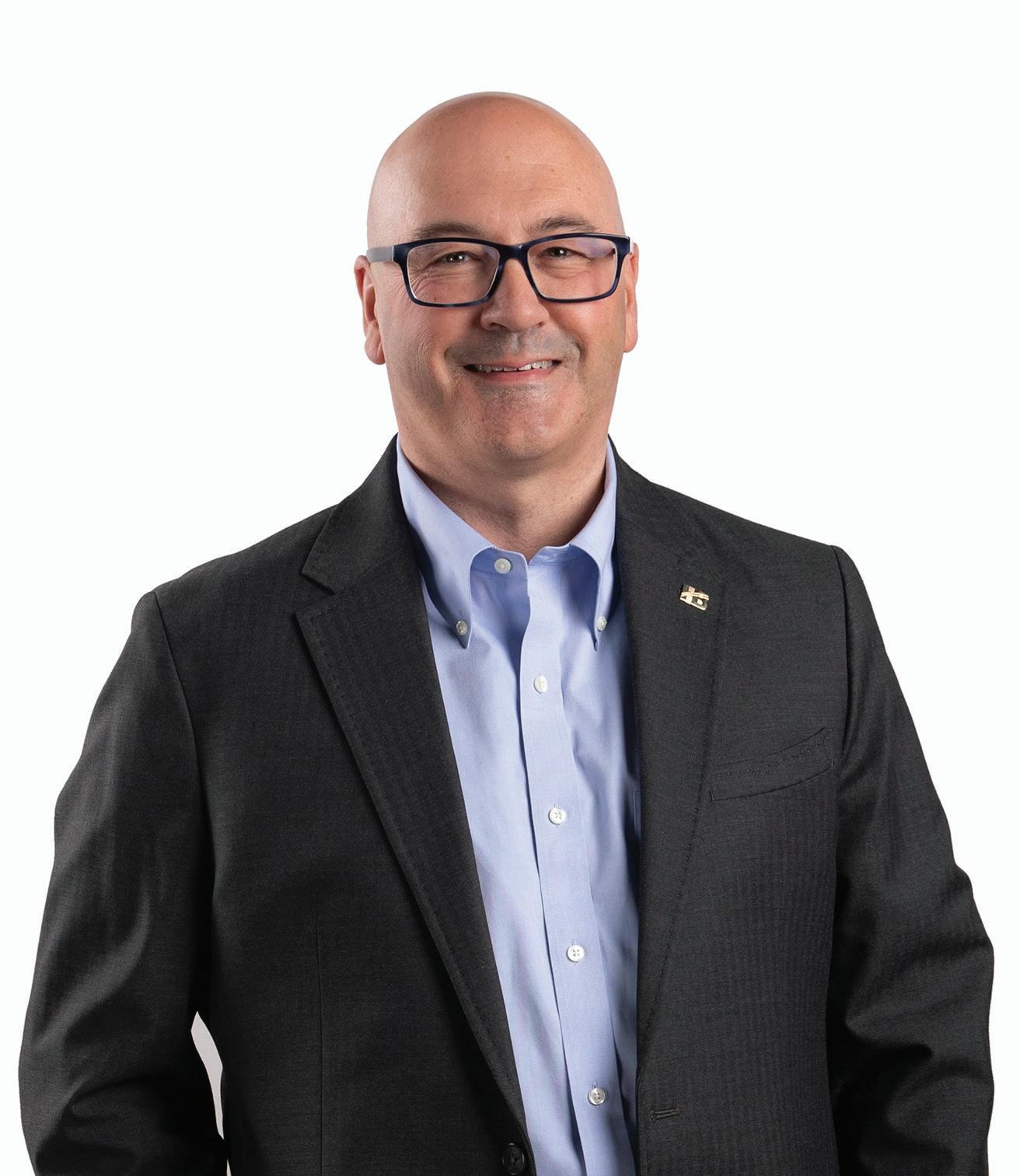
different state that’s going to make a decision on a deal in northern Michigan. It also allows us to be responsive. If we need to hurry up and get a decision made, we can make it right here.”
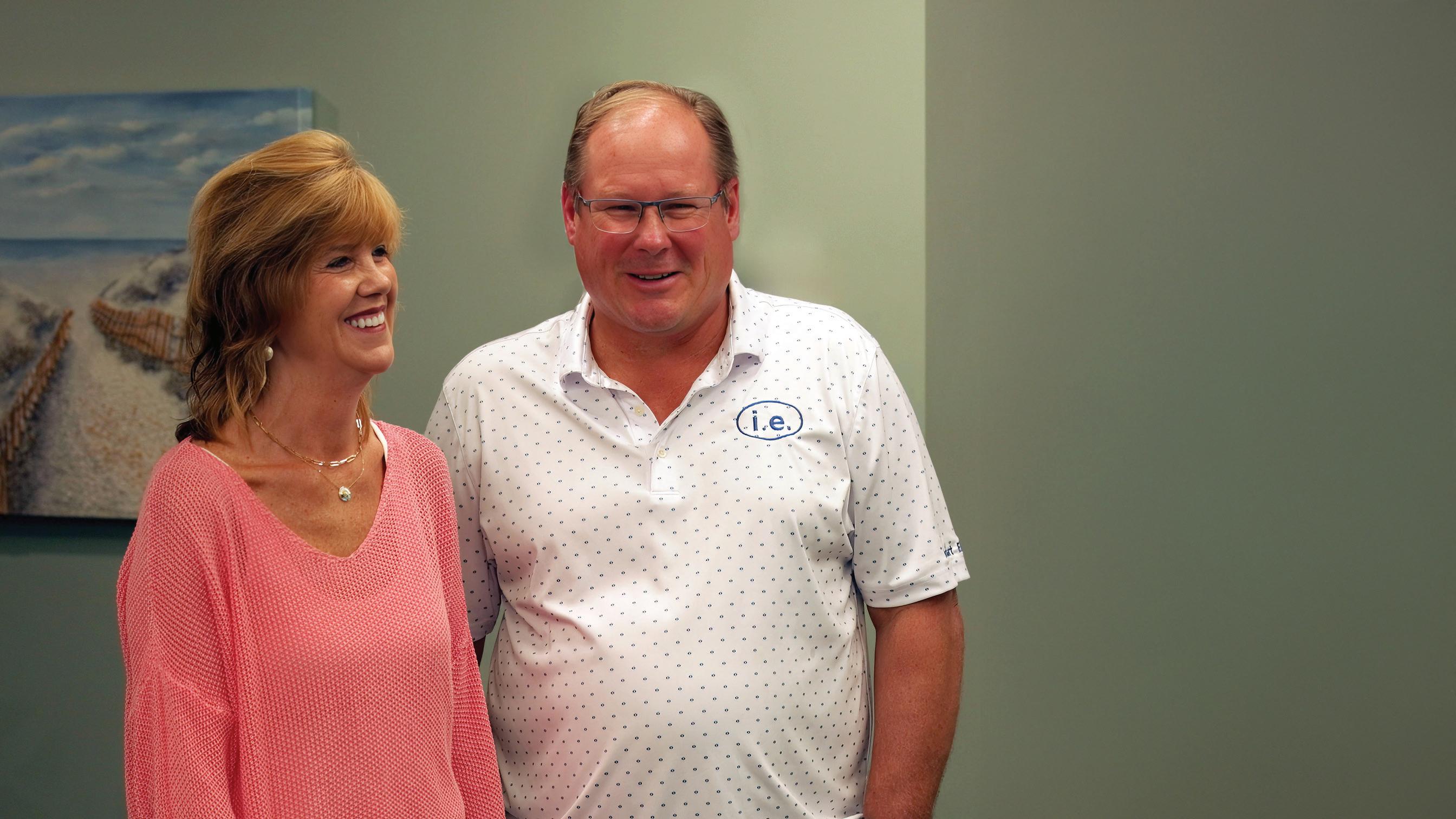



Scott Ashurst has been in commercial banking for 40 years, spending the last 11 at State Savings Bank in Traverse City.
He reflected on a recent transaction where he and a customer, both nearing retirement, spoke about their very long-standing business ties. It’s things like this that give Ashurst great satisfaction.
“It’s all about relationships,” he said. “I’ve got some people that I’ve leant money to for over 30 years. It’s been a lot of fun.”
Those relationships allow him to turn a rigid, dollars-and-cents business into something a little bit more.

“Some other institutions might have more of a formula-based type thing, predetermined formulas, that type of stuff, but that’s not really how we do business. It’s more of a person-to-person thing for us,” he said. “Get to know the person and see what makes sense for both of us.”
Ashurst has enjoyed being a part of – and laments the gradual reduction of –truly local banks in the area.
“There’s fewer and fewer community banks, which is where I’ve worked my entire career here in Traverse City,” he said. “It’s local service that truly makes the difference. We live here, we work here and we make the decisions here.”
Customers gravitate to that, he believes, especially around here.
“I think there’s a greater expectation of a local relationship in northwestern lower Michigan,” he said. “I think businesses here appreciate that service.”
And you’d better bring the best service possible when customers have as much choice as they do in northern Michigan.
“There’s a lot of competition in town, and that’s a challenge for sure,” he said. “You always have to earn the business, add how you differentiate yourself is service. That’s what we pride ourselves on.”
Autumn Gillow has been at Fifth Third Bank for about eight years, and in her role serves bigger fishes – think companies with sales of at least $30 million stretching up to $1 billion (believe it or not, a category referred to as “middle market” in banking).
“In northern Michigan, there’s obviously only so many companies that are of that size, so I’m traveling a lot to see them,” she said. “My market is all of northern Michigan, basically Cadillac over to Alpena and up into the Upper Peninsula.”
The people Gillow works with are hands down her favorite part of the job, she said.
“I have the best clients in northern Michigan, and I work with some of the most talented bankers,” she said. “Commercial banking isn’t glamorous, but the people make it so much fun.”
Fifth-Third offers a “full suite” of banking services to these clients, so Gillow handles far more than loans.
“I have a handful of clients where I might have a one-off loan, but for the most part when we onboard a client, the client and I have the expectation that I’m going to be managing all of their banking needs.”
Competition for her services exists, but it helps that she’s the only one right here in the market.
“It’s certainly competitive, but I don’t think there are many people locally that are executing and providing this service,” she says. “I’m not certain of this, but I think that Fifth Third is the only middle market bank that has a presence in north-
John Hyatt joined Team One Credit Union in 2014 to establish the company in the Traverse City market. He’s been in the business in one way or another since he graduated from Michigan State University in 2000, and he’s loved every minute.
“When you can help people achieve their dreams and goals, it’s amazing,” he said.
Ultimately, Hyatt sees commercial lending as a vital community service. He works with startups all the way up to larger, established companies to help with growth, and this growth almost always has a tremendous ripple effect.
“The health of our small businesses has a big impact on the health of our communities,” he said. “If you can help a business owner with funding that
equipment expansion or getting them the working capital that they need, it’s not just a big deal for them, but it’s a big deal for their team and all their teams’ households, and it’s a big deal for the community.”
He’s been involved in many major projects – his outstanding book is over $200 million, he says – but it’s not the size that matters.
“A deal that I’m very proud of was when we stuck our neck out on a startup salon, and I don’t think anyone else in town would have said yes on that deal,” he said. “She built a great business and sold it, and did extremely well. To me, those are the huge success stories…that personally mean a lot.”
Hyatt said credit unions are rapidly gaining market share in a commercial lending world that was once entirely dominated by banks.
“When I first started calling on folks

ern Michigan. At this point everyone else has those resources in the Grand Rapids and Detroit markets.”
Gillow is glad to see at least a bit more stability return in recent months.
“The last few years have been volatile, with higher interest rates, uncertain political environment, global issues with wars and tariffs – just a lot of macro noise in the market and that impacts business owners’ confidence in investment,” she said. “Things seem to be settling down, and we are seeing a strong uptick in commercial investment in the second half of the year.”
Finally, Gillow is a Traverse City native who is proud to serve others in her community.
“For the most part, if people are here, it’s because they’ve chosen to be here, and if I can in some small way help a family to be successful in their businesses and get to be in northern Michigan, that’s a win for sure.”
in 2014, the responses I would get from all kinds of businesses owners would be ‘Are you kidding me? Credit unions are doing this?’” he said. “And today, we’re the number one call.”
Like everyone else in his business, Hyatt has to judge and balance risk. You want to help people, but they have to be able to hold up their end of the deal.
“You look at the buyers’ ability to make adjustments or be nimble and turn things around if there are speed bumps,” he said.
Hyatt likes being in Traverse City, where there’s still plenty of momentum despite more marked slowdowns elsewhere.
“We’ve had persistent higher rates now for a few years, and the market may have slowed down a little bit, but the value is still there,” he said. “This market maintains its value, and we constantly see folks that want to be in this market.”













New law cuts seniors’ taxes, jeopardizes their health care

By Rick Haglund
Covering 940 pages, the One Big Beautiful Bill Act is a sweeping piece of legislation that will have a significant impact – good and bad – on the finances and health care of millions of seniors.
“It gives something to everybody, almost. They’ve packed a lot in there,” said Eric Braund, founder of Black Walnut Wealth Management in Traverse City. Braund and other financial advisors agree that the gargantuan tax-and-spending bill, signed into law in July, is mostly positive for those on the AARP magazine subscription list.
“We have a lot of retirees who will owe little or no taxes. It’s huge,” said Holly Gallagher, founder and president of Horizon Financial in Traverse City.
But Gallagher and others say seniors will likely need the tax breaks to help offset continued high prices for groceries, health care and other living costs. Many will be hit by the law’s changes to Medicare and Medicaid that could result in higher premiums and lost coverage.
That pain will migrate to Munson Healthcare, the largest hospital group in northern Michigan. The eight-hospital system said it expects to lose more than $50 million a year because of Medicaid cuts kicking in over the next several years.
“We are doing everything we can to still care for our patients and neighbors, but this legislation puts our collective community health at risk,” Megan Brown, Munson’s chief marketing and communications officer, said in a statement.
The act also is estimated to boost the federal budget deficit by about $4 trillion over the next 10 years, possibly putting seniors’ Social Security benefits at risk, one local financial advisor said.
Those deficits make “future benefit cuts more likely as we move closer to (Social Security) being depleted,” said Marc Hudson, president of Hudson Wealth Management in Traverse City.
But there are lucrative tax benefits for seniors in the new law, ranging from low-income retirees to those who employ financial advisors to protect retirement income.
The new law provides a bonus deduction of up to $6,000 for those 65 and older. The full deduction is available to taxpayers with a modified adjusted gross income of up to $75,000 for individual filers and $150,000 for couples filing jointly. Older taxpayers can take the deduction regardless of whether they itemize.
Each spouse can take the deduction, for a total of $12,000 if both are 65-plus, according to AARP. The deduction is reduced for single filers making up to $175,000 and couples earning $250,000. Those earning above those levels aren’t eligible for the bonus deduction, which ends in 2028.
“That’s a lot of money, as far as a deduction goes,” Braund said. “That helps a lot.”
What’s more, those 65 and older get an extra standard deduction this year of $2,000 for single taxpayers and $1,600 per qualifying spouse for couples filing jointly.
Those deductions will reduce the taxable income of a 65 year-plus couple with a combined income of $120,000 by $46,700, according to an example cited by AARP.
“For those who are not quite ready to retire [and buy insurance on the ACA Marketplace], their insurance plans are going to be very expensive.”
– Dawn McConnell, Medicare and Individual Health Insurance Specialist, Ford Insurance
An analysis by the White House Council of Economic Advisers found that 51.4 million Social Security beneficiaries, or 88%, will no longer pay federal tax on their Social Security benefits because of tax changes in the new law.
And as Gallagher notes, the law makes permanent personal income tax cuts that were approved during President Donald Trump’s first term in 2017 for all tax filers. Those cuts, among the largest in history, were due to expire this year.
Much of the savings from the new tax law will go to higher income tax filers. The bottom 20% of earners will save an average $150 while the top 20% will pocket $12,540, according to the Urban-Brookings Tax Policy Center.
Another provision in the new law will benefit many middle-to-high income seniors, financial advisors say.

Tax filers earning up to $500,000 can deduct $40,000 in state and local property taxes, known as SALT, from their federal returns, up from the current $10,000. Braund says that will aid many retirees and near retirees with more than one home. The benefit goes back to $10,000 in 2030.
“That one affects a lot of our clients,” Braund said. “It helps those who are wealthy, but not super wealthy.”
But many seniors are likely to see tax savings eaten away by rising health care costs. And some, who are under 65 and insured by Medicaid, might get kicked off their health insurance because of work requirements and onerous paperwork requirements under the new law.
As many as 200,000 Michigan residents could lose Medicaid benefits over the next decade because of the new work require-
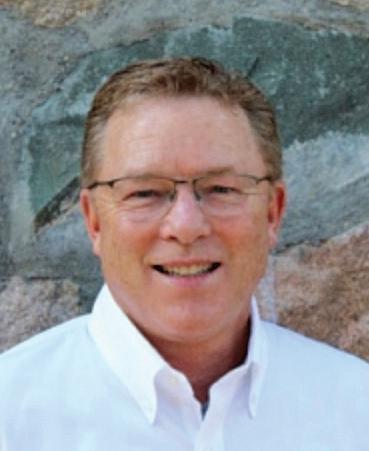
ments and tighter eligibility standards, according to the Citizens Research Council of Michigan.
An estimated 10% of Munson’s 200,000 patients who are insured by Medicaid or through the Affordable Care Act Marketplace will lose their coverage because of the new federal law, Brown says. Most of the Medicaid cuts take effect at the end of 2026.
Enhanced ACA premium tax credits, enacted during Covid by the American Rescue Plan, are set to expire at the end of the year. Unless Congress extends those credits, premiums for the 24 million people now receiving them will rise by
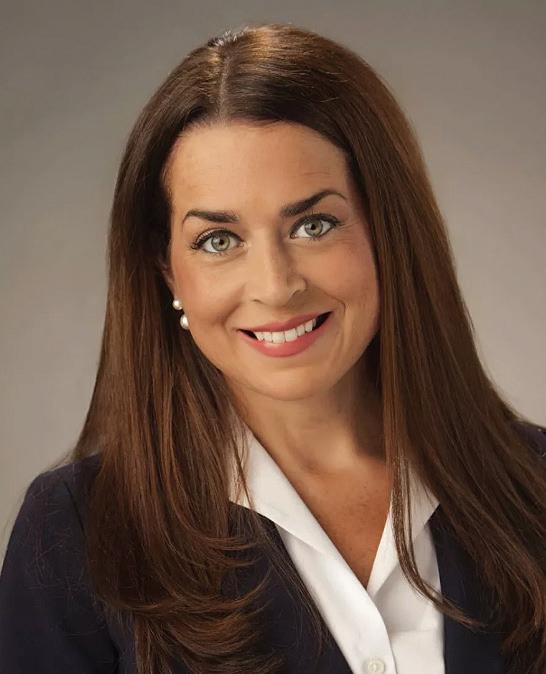
as much as 90%, according to the Kaiser Family Foundation, a health policy research organization.
“It’s not going to be a good scene in 2026” for anyone now getting ACA premium credits, said Geoffrey Harris, vice president of Medicare sales at Michigan Planners, an employee benefits agency in Traverse City. “The whole Medicare space is in transition.”
Overall, Michigan health insurers have proposed a rate increase of 15% to 20% for next year because of rising health care costs, Harris says. He noted that Blue Cross Blue Shield of Michigan, the state’s largest health insurer, reported an operat-
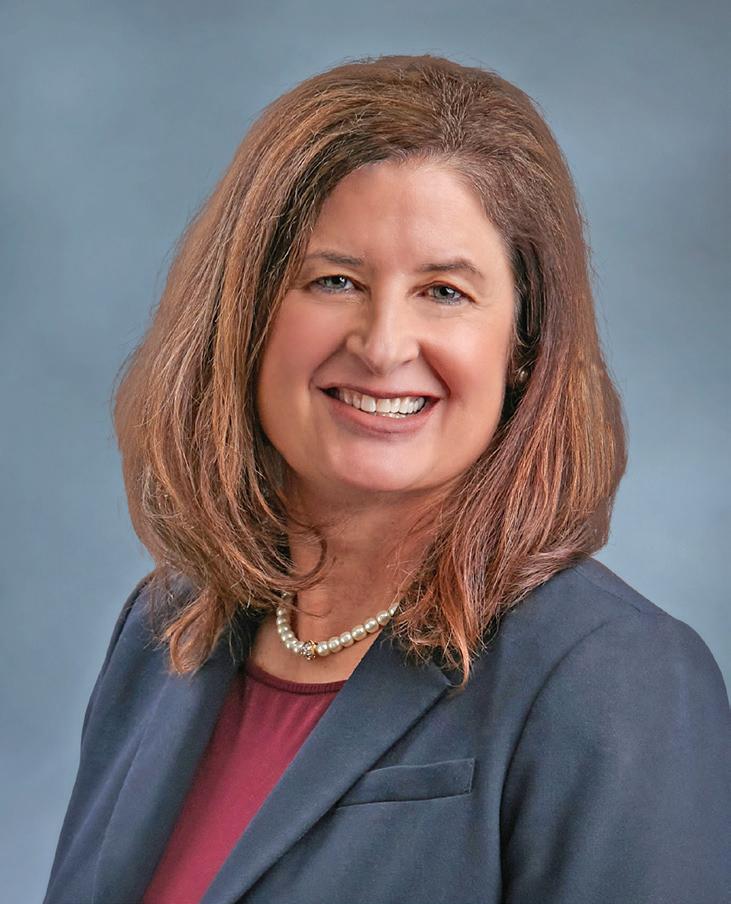
ing loss of $1.7 billion in 2024.
Dawn McConnell, a Medicare and individual health insurance specialist at Ford Insurance in Traverse City, concurs that the loss of ACA premium tax credits will hit many seniors hard.
“For those who are not quite ready to retire [and buy insurance on the ACA Marketplace], their insurance plans are going to be very expensive,” she said.
An estimated 15 million Americans could become uninsured because of changes to Medicaid, which provides health insurance to low-income families, and Medicare, which insures those over 65, according to Kaiser. Those changes
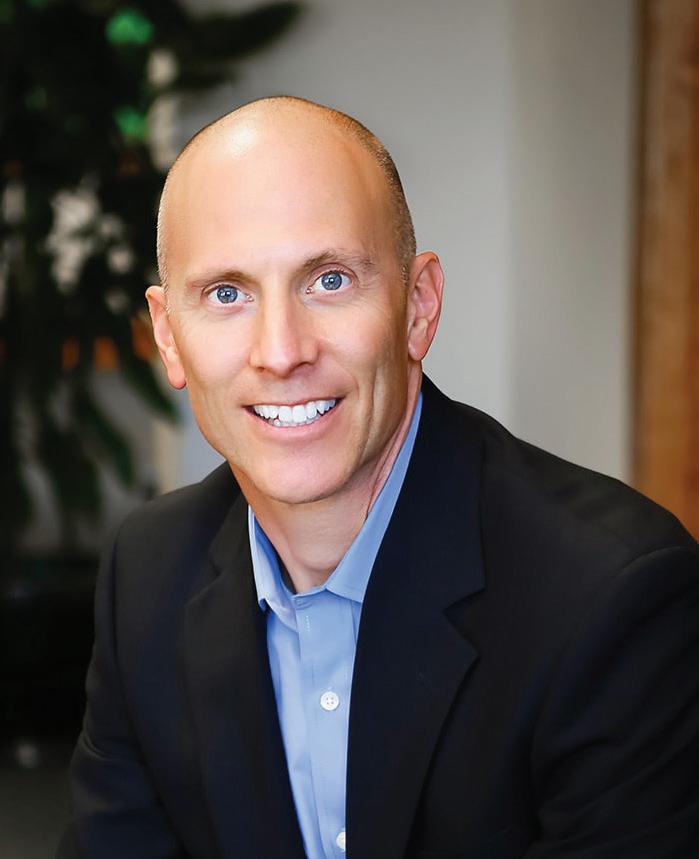
have put many of McConnell’s customers on edge.
“They’re definitely concerned about their health insurance,” she said. “When people come into my office there’s a level of anxiety about the future. It’s made us start thinking out of the box a little bit.”
One option her agency offers customers is an indemnity plan that protects against costs incurred from catastrophic medical events. Another is a concierge plan in which a patient pays a health care provider a certain amount of cash up front to treat them throughout the year.
“I’m a busy woman these days,” McConnell said.











With relocation rates hitting a record low and more people choosing to stay put to make the house they’re already in a home, interior designers like Tansy LeBlanc are stepping up to the growing demand. “We’re seeing a lot of clients in existing homes who are either doing renovations or wanting their home to have a little more character and they just need some help with that,” said LeBlanc, who along with her husband Marty, opened her first design showroom, LeBlanc House in Traverse City’s NoBo District over the summer.
Neighboring Commongrounds on East Eighth Street, the 1,000 square foot studio is a warmly lit display for LeBlanc’s 25 years of experience in the interior and kitchen design industry. Much of that experience has been gained working all over the country. “I’ve learned that the most important thing is starting with the foundation – focusing on what’s going to stay relevant instead of what’s trending at the moment and also being true to the area.”
Taking design cues from the greatest lake
In Northern Michigan, staying true to the area has meant bringing elements of the natural world into LeBlanc’s designs, both literally and figuratively. Elements like beach-stones and bare branches frequently make their way into her projects while her colorway inspiration comes from places like Esch Beach where the shifting blues of Lake Michigan set against the muted dunes creates its own palette of neutrals.
The same serene aesthetic can be found in the items she curates for the retail component of LeBlanc House, from vintage French paintings depicting seaside holidays to antique pale aqua glass bottles repurposed as bud vases. “Everything in the store is bespoke but also functional for everyday use,” said LeBlanc. “It’s all things I’d use – or already do – in my own home, like
horsehair brooms and Denby Pottery dinnerware from England.” Currently, LeBlanc is working to grow her network of local makers with the goal of stocking her shop with pieces that reflect the artisan talent right here at home. She also scours online and travels hundreds of miles to estate sales and antique markets for one-of-a-kind pieces to bring back to her northern Michigan clients and LeBlanc House retail customers. “It’s hours of hunting,” she said.
A calming signature style
While LeBlanc uses her eye for nostalgia to draw personality into modern spaces, she says that older homes are her specialty. One of her biggest projects to date is set to kick off this fall with a full reno in a downtown Traverse City Victorian. “We’re going to be turning an attic into a master suite and adding a balcony and then eventually a carriage house will also be built onto the back of the home,” said LeBlanc, adding that for her interior designs she spends many hours just going over the plans and details while helping clients create cohesion and function with a low-clutter, simple elegance that’s become signature to her style.
Her approach has been especially successful in breaking up the monotony of the open floor plans that became status quo for new builds in the 90’s and 2000’s. “For those clients, they want their home to feel like it’s cozy so they’re reaching out asking, ‘how can we get some personality?’” said LeBlanc, who mixes textures in similar neutral colors to add intrigue without overwhelming the eyeline. Lampshades, rugs, bed linens – they’re all utilitarian components that, when chosen with intention, can elevate an otherwise generic space.
Curating the (functional) clutter
Kitchens, added LeBlanc, are the “bread and butter” of her industry –

probably because they’re one of those spots that goes overlooked when it comes to finishing touches, even after big renovations. “It’s a big investment and they’ll have this beautiful result,” LeBlanc said. But, the potential for a stunning revamp is dulled when a mish-mash of black plastic utensils and worn out dish-towels get thrown back into view. “It’s important that your functional pieces also be pieces you’re excited about, and that create harmony within the space” said LeBlanc. Her philosophy is if the toaster’s going to be out in plain sight anyway, why not go for one that com -
plements everything around it? Both in her store and in her interior work, LeBlanc provides “things that are very practical and beautiful.”
A self-proclaimed introvert, LeBlanc says she’s energized by bringing homes into balance. And when it comes to those behind-the-scenes headaches, whether it’s tracking down an old table weathered to perfection or playing phone tag with vendors, taking the pressure of a home design so her clients can exhale is her strength and also her joy: “That’s the essence of my job.”





Former GM attorney forms estate planning firm after son’s death

By Ross Boissoneau
Dealing with something as painful and profound as death is never easy. But the challenges are eased for those left behind when plans are made beforehand.
That’s what Mary Ann Wehr and her family learned when her son James died from COVID at 33, leaving his pregnant wife to probate his house in the wake of losing her husband just days before their second wedding anniversary.
“I wish people would think more practically. Sometimes the worst does happen,” Wehr said. “Life does have its twists and turns.”
Wehr was a practicing attorney for General Motors for a decade and a half. Her son’s death prompted a change of focus, and she founded Great Lakes Center for Estate Planning. Wehr says her firsthand experience gave her both the desire to help others and the understanding of how to do so.
She says pre-planning provides peace of mind for the entire family. Interpersonal dynamics can shift and/or become strained in the wake of an unexpected death, or even one that’s anticipated. A child may wonder who would take care of them if mom or dad or both died. Siblings may disagree on how to divide assets, whether a home, business or both. With blended families, things can get even murkier. Planning ahead eases the strain for all involved.
For example, when there’s a family cottage and multiple children, the questions are many: Who wants it versus who wants the money a sale would bring, who will provide the upkeep, who will take responsibility for taxes ... it quickly becomes a legal and family challenge. That’s where
pre-planning is invaluable, she says.
“Set rules to keep them out of conflict,” Wehr noted.
Wehr says it can also alleviate the intrusion of third parties, be it the courts or outside trustees. She also notes creating a plan can be – in her estimation, should be – an ongoing process, one that continues past the point of initially creating a will or trust to include annual reviews for changes in circumstances or desires, as well as any necessary legal updates.
Determining how to deal with one’s assets and wishes is a complex matter.
Wehr says the first step for her is to get to know her clients. Learning their values, what they want and what they don’t want enables her to help them move forward, whether it’s preparing a simple will or a complex trust. She says she approaches the process with the client’s individual needs in mind, rather than trying to fit everyone into the same box.
Wehr tries to approach it in a way that’s reassuring rather than alarming.
“I work for you during your life, and who gets your stuff,” she said, deliberately using the term “stuff” rather than possessions or assets. “If I use the word assets, it sounds … intimidating.”
A will dictates asset distribution – the dispensation of stuff, in Wehr’s words – and guardianship after death. It goes through probate, a public court process. A trust, on the other hand, is a more complex, private legal arrangement which bypasses probate and can manage assets both during life and after death.
Wills are generally simpler and cheaper to create, take effect only after death, and allow for naming a guardian for minor children. Trusts, however, offer greater con-
“I wish people would think more practically... Life does have its twists and turns.”
– Mary Ann Wehr, Personal Family Lawyer, Great Lakes Center for Estate Planning

trol over how and when assets are distributed, provide privacy, and can manage assets –okay, stuff – if in the case of incapacitation. It might include planning for those with special needs, even who will take care of your pets. Wehr says it is important to make sure everything is protected against unforeseen claims and creditors.
Even within the world of trusts there are differences, primarily between revocable and irrevocable.
“Revocable trust offers flexibility for future years,” said Wehr, while irrevocable trusts offer less control but stronger financial and tax benefits.
Great Lakes Center for Estate Planning is Wehr’s third act professionally. Preceding her first foray into law at GM and her current work was her initial career in IT, before she transitioned to law.
Under Michigan law, only an attorney can do estate planning, says Wehr. Her fee varies depending on the amount of
work, but she suggests looking at it as an investment rather than a cost. She puts her cost somewhere in the mid-range of such plans, ranging from $2,000 to $7,000, depending on what her clients need.
While she is technically not in sales, Wehr says she does sell peace of mind.
“Think about pre-planning,” she advised.
It’s not only about making things go smoothly for those left behind, though that is important.
“There are aspects of estate planning that are helpful during your life,” said Wehr. “If you don’t have financial power of attorney, you have to petition the court so you don’t have some stranger doing it. Same with medical power of attorney. Get a health care directive.”
For more information, see greatlakescenterforestateplanning.com.




How northern Michigan’s senior housing shortage is exacerbating every other market hurdle
By Craig Manning
“It’s really bad.”
That’s Yarrow Brown’s quick and blunt status report on the senior housing situation in northern Michigan. Despite the Grand Traverse area’s status as a desirable retirement destination, the numbers show that the region is woefully unprepared to house its ever-growing population of senior citizens – at least without some major changes to local zoning and development trends.
As executive director for Housing North, Brown is no stranger to the often-dire facts and figures that characterize northern Michigan’s housing problem. A nonprofit organization formed in 2018, Housing North works to “build awareness, influence policy and grow capacity and resources for housing solutions” across the 10-county region of Antrim, Benzie, Charlevoix, Emmet, Grand Traverse, Kalkaska, Leelanau, Manistee, Missaukee and Wexford counties.
Every few years, Housing North embarks upon a data-rich deep dive to prepare a housing needs assessment covering all 10 counties. The most recent of
those reports, published in 2023, looked at existing and projected housing gaps across the 10 counties from 2022 and 2027, estimating that northern Michigan would be more than 30,000 residential units short of its housing needs by 2027, including 8,813 rental units and 22,455 for-sale units.
Those numbers, Brown acknowledges, are severe enough to guarantee that virtually every local resident is affected in some way by the housing shortage, whether in the form of skyrocketing housing costs or staffing challenges at local businesses. For seniors, though, Brown says the problem is even more complicated because of how it compounds with other factors, like the need to live on a fixed income or the desire to find a home that is conducive to aging in place.
Susan Leithauser-Yee, a real estate industry professional and a technical support coordinator for Housing North’s Housing Ready program, says a big part of the challenge around senior housing in the region is the broad and amorphous definition for what “senior housing” actually looks like.
“We are especially seeing a lot of people on fixed incomes being displaced more rapidly, and that’s mostly people who are 55 and older.”
– Yarrow Brown, Executive Director, Housing North
“When we are talking about senior housing, seniors could be in their own homes; they could be in a downsized home they moved into after retiring; they could be living with a loved one; or they could be in a senior community, where there’s this whole spectrum of independent, assisted, skilled nursing or primary care facilities,” Leithauser-Yee explained.
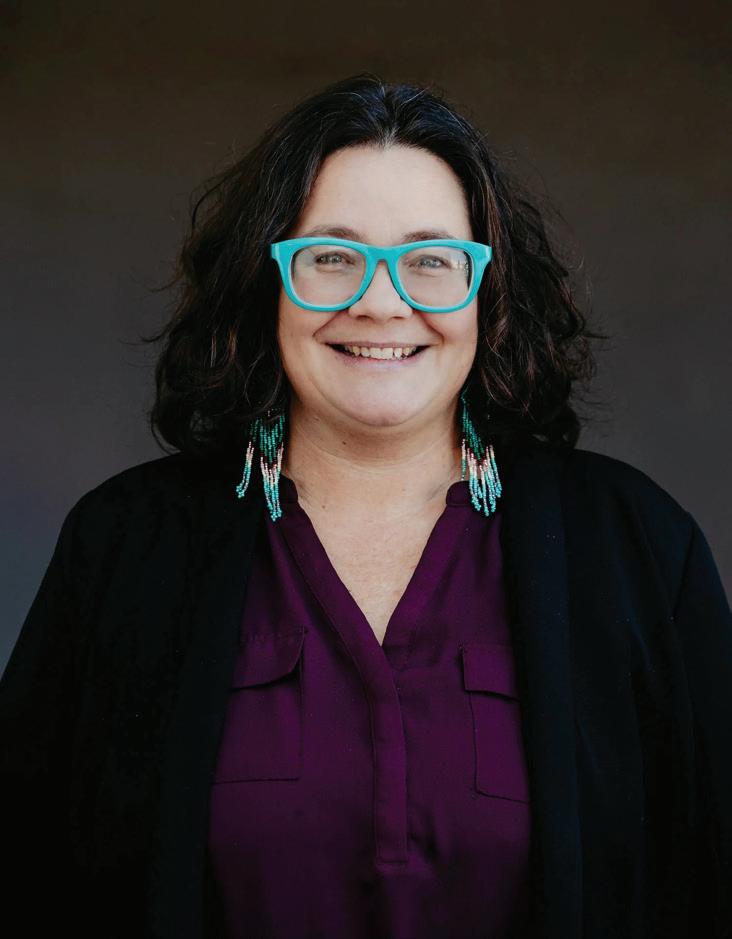
“There are just a lot of different segments within senior housing, and that makes it hard to track where the need is.” Hard to track or not, the need is there. In a stakeholder survey done as part of the 2023 Housing Needs Assessment, senior-specific housing – including independent living, assisted living and nursing care communities – was consistently rated
as a moderate to high need, particularly for groups with lower incomes of $25,000 or less. Brown expects those needs will only grow as some of the cheapest real estate inventory in the region increases in price, thereby displacing the people –including fixed-income seniors – that call those places home.
“Susan’s been sitting on a Grand Traverse County workgroup looking specifically [at housing displacement],” Brown said. “It came up a lot during the election, when people were canvassing. One of the state reps was hearing from a lot of people being displaced, especially in the manufactured home communities around here. We are especially seeing a lot of people on fixed incomes being displaced more rapidly, and that’s mostly people who are 55 and older.”
A few new senior living communities have come online in the past year or so that could help matters. One example is Meadow Valley Senior Living in Garfield Township, which brought 174 units to the table in independent, assisted and memory-care categories when it opened in 2024. But the region has also lost some facilities in recent years, leading to a “two steps forward, one step back” type situation. In 2021 for

year, now as a hotel called The Vic.
One of the biggest problems, according to Leithauser-Yee, is that aging adults rely on a continuum of options for housing

would be able to age to a certain point in their long-term homes, downsize to smaller, more accessible dwellings to age in
place and lean on in-home care as needed, and then move to senior living communities or nursing facilities as health and ability demand. Without enough capacity or affordability in all or most of those categories, though, the continuum breaks apart, which then causes a domino effect that impacts the entire housing market.
“There are a lot of seniors in our area right now who live in these larger homes, but they don’t really have anywhere to go to downsize into a lower-cost situation,” Leithauser-Yee explained.
Brown adds that this immobility causes additional complexities.
“And then when people aren’t leaving
“Some say he’s the cat-whisperer, but we call him the cash-whisperer”




their homes because there’s nowhere else to go, not only does that impact the senior looking to downsize, but it also means that you have all these four-bedroom houses that are locked up with one or two-person households,” she said.
All told, the Housing Needs Assessment found that nearly 57% of households in the 10-county region have heads-of-household who are 55 years old or older. Moreover, virtually all of the projected household growth in the region by 2027 is expected to come in the form of older households, including 3,758 additional 75-plus households and 2,114 more 65-74 households. For comparison’s sake, in the same time frame, the region is expected to see a net loss of 1,157 households aged 25-34, and a gain of just 841 households in the 35-44 demographic.
The solution, Brown and Leithauser-Yee say, will involve a lot of different components. More senior living communities setting up shop in the area would help, particularly if they were focused on providing space and services at a more affordable price point. (“I don’t want to pick on local providers, but at one of the newer senior living communities in town, a one-bedroom is $5,200 a month,” Leithauser-Yee noted.) More housing developers focusing on designing and building age-in-place-ready homes would help, too.
“We’re noticing that, with Habitat for Humanity, they’re building their homes completely ADA-accessible now, which is a great trend,” Brown said.
More than likely, though, younger people will have to get involved and be proactive to ensure that their parents and grandparents have living options. Depending on income level, that might mean getting on a waiting list for a Traverse City Housing Commission unit – waiting lists that Brown says “are years long” – or normalizing roommate arrangements for older adults.
“We’re definitely looking at how we can teach people how to be roommates again, and at giving them best practices to follow for sharing a kitchen space or other living spaces,” Brown said.
Leithauser-Yee, for her part, is also a strong proponent of popularizing accessory dwelling units (ADUs) as a senior housing option. ADUs have been a bit of a political football in northern Michigan over the years, with some locals worrying about them being used as short-term rentals or simply adding too much density to local neighborhoods. When it comes to older loved ones looking to downsize into smaller, more manageable, and more affordable living situations, though, Leithauser-Yee argues that families could solve a lot of problems by going down the ADU path.
“If we had an ADU added to every




“If we had an ADU added to every block in the city, that would solve part of the problem.”
– Susan Leithauser-Yee, Technical Support Coordinator, Housing North
block in the city, that would solve part of the problem,” Leithauser-Yee said. “Now, if you build a free-standing backyard apartment, which is the concept we often think about with ADUs, that’s probably going to be cost-prohibitive for a lot of people, both in terms of construction costs and because of the big bump in taxes from adding square footage. But we’ve started trying to educate people on a lower-cost solution, where maybe you can convert existing square footage in your home to house a family member, and if you want some privacy, maybe add a bathroom and a second entrance.”
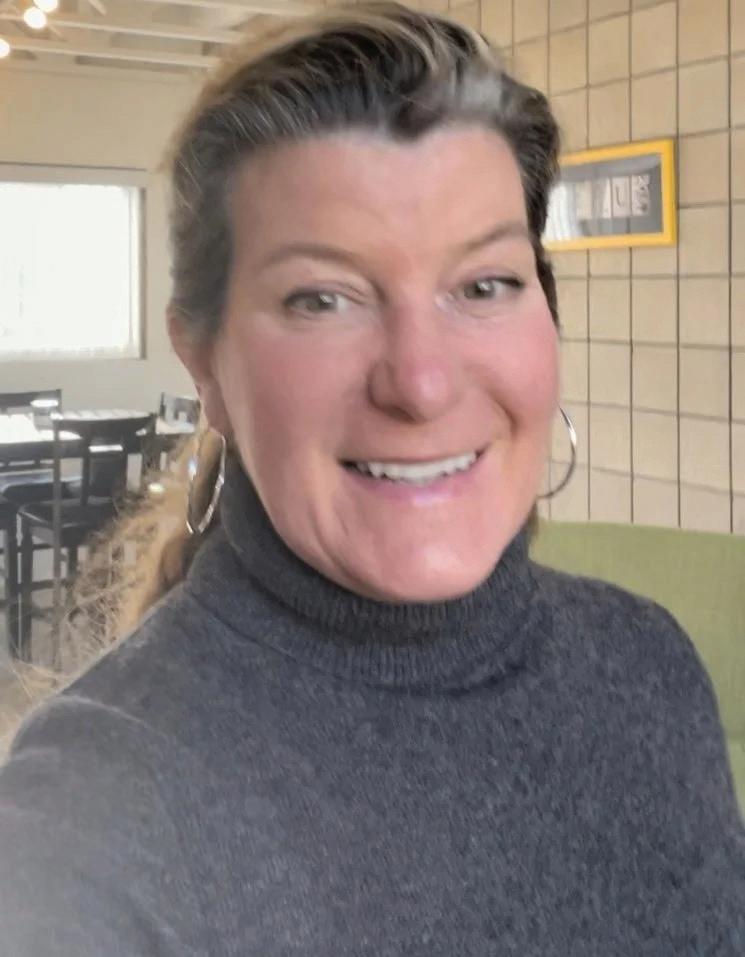
Brown says that kind of thinking is “definitely” needed now.
“We need to encourage these different types of living spaces and get people comfortable with the resources of how you would create that kind of space,” she said.
More than anything else, though, Brown thinks locals need to let go of their “resistance to zoning changes,” whether that means rules that bar or limit ADUs or even the city’s closely guarded building height limitations.
“We can’t keep putting up barriers to housing,” she said flatly.


By Kierstin Gunsberg
Seniors now make up nearly a quarter of Grand Traverse County’s population, and they’re driving close to half of Munson Medical Center’s inpatient admissions, says Dr. Jonathan Beaulac, a geriatric and internal medicine physician at Munson Healthcare (MHC).
“It is a vast majority,” he said. With baby boomers aging into retirement and Gen X not far behind, that number is only going to grow over the next two decades, says Beaulac, and with it, the demand for quality geriatric care.
“[There’s] always pressure from the community to provide appropriate complex care management for our aging adults,” he said.
But as that population booms, MHC –which serves over half a million residents across 14,667 square miles – is surrounded by federally designated Healthcare Professional Shortage Areas (HPSAs). That is, communities the Health Resources and Services Administration identifies as medically underserved, where access to primary care, dental appointments and mental health checkups are, like so many things Up North, in high demand and low supply.
Just this past summer, the main Traverse City campus broke records with
more than 400 inpatient admissions on multiple consecutive days during July.
One of the reasons for the spate is what most here have mumbled under their breath for the last decade: This area is white-hot and getting more crowded by the year, making it tricky for healthcare providers across the board to keep up.
Grand Traverse County alone added nearly 10,000 residents in the past 15 years, many of them retirees.
Where is this retirement aged population boom coming from?
While conversations around northern Michigan’s rapid development sometimes point to wealthy seniors flocking north and wrenching our resources, Beaulac says that’s not what he’s seeing.
Instead, most older adults in the area are life-long residents whose health needs are naturally increasing with age.
“Not every patient or individual here is a retiree from the corporate or business world,” he said. “A lot of people are born and raised in the area,” and, as he puts it, “aging in place.”
That “place” is wide and often rural and as MHC’s specialties expand, so does its number of referrals, which now come from all across the state. Facilities like
“Munson leadership is aware of the challenges. It’s an ever-changing landscape and trying to stay up to speed and ahead of some of these demographic and population trends is a tough task.”
– Dr. Jonathan Beulac, Geriatric and Internal Medicine, Munson Healthcare
its many outpatient cancer and infusion clinics and Traverse City’s Comprehensive Stroke Center (the only one of its kind north of Grand Rapids) draw patients from as far as the U.P. explains Beaulac.
“It’s kind of like, if you build a thing, they will come,” he said.
Rapidly multiplying needs – and barriers
But even with more clinics and satellite services popping up throughout the system, getting to those locations can be hard for
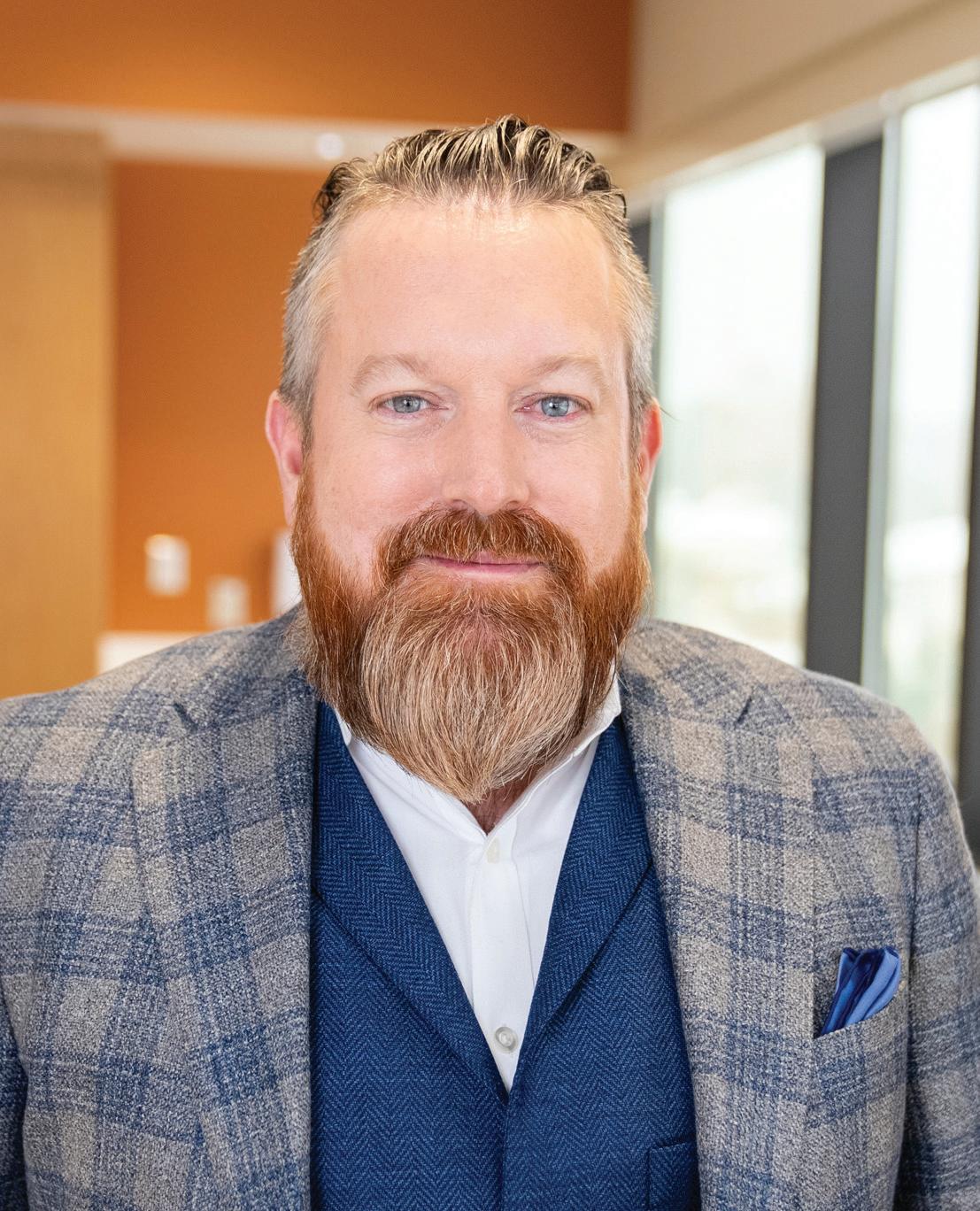
older patients. As more seniors find it tough to access timely primary and specialty care, it’s creating another problem. More seniors are landing in the ER. That’s far from ideal, says Beaulac, citing travel to and from appointments as one of the biggest barriers to healthcare for seniors Up North. Another, not so surprising hurdle is housing.
“I can’t tell you how many patients this last month have come in where their housing situation is kind of unknown,” Beaulac said.
Whether it’s rent becoming unaffordable or older patients living in homes that are unequipped for the vulnerabilities they face after surgery, Munson’s nurses and social workers are jumping through extra hoops to coordinate safe, realistic discharge plans, all while contending with a national nursing shortage that’s made its way to northern Michigan.
Meanwhile, as the need for care grows, many of the very people providing it are also retiring (and then, ironically, entering that growing segment of demand). The American Association of Colleges of Nursing projects that by 2030, one million nurses will retire nationwide without enough new graduates waiting in the wings to take their place.
The conundrums of addressing the ballooning senior patient load isn’t lost on MHC. Leaders of the 29-county system are actively working to compensate for both the larger overall patient population and those patients whose age-related health needs are multiplying, says Beaulac.
“Munson leadership is aware of the challenges,” he said. “It’s an ever-changing landscape and trying to stay up to speed and ahead of some of these demographic and population trends is a tough task.”
But as someone who’s served with other networks throughout the state, Beaulac says he’s reassured by what he sees.
“I do think that the leaders here are impacting positive change, and only
greater change will occur in the near future,” he said.
Some of those changes, aimed at knocking down barriers to access, are already underway.
close
This summer, MHC landed $500,000 in MSHDA funding for an Employee Assisted Housing Fund, money that will provide stipends for 40-60 more employees, including nurses, to help ease the clinical staffing deficit and bring better patient care coverage across northern Michigan.
The system is also looking for ways to redirect as much of their existing workforce towards patient care. Earlier this year, MHC started testing drones to move lab samples, medications and supplies between facilities in Traverse City. If it all pans out, the drones could cut down on courier trips and keep more staff inside the hospitals and clinics where they’re needed most.
And in March, the Grand Traverse Mental Health Crisis and Access Center opened on Munson’s main campus, following an estimated 40% rise in mental health-related ER visits among patients 65 and older over the past two years. The new center, which is available to patients of all ages, is in collaboration with community partners like Northern Lakes Community Mental Health Authority and

is currently in its second phase, offering psychiatric urgent care and in-home crisis intervention, something especially relevant to those seniors struggling with transportation access.
Behavioral health, says Beaulac, is a major care gap for older patients.
One reason, says Dr. Cody Overmyer, an outpatient psychiatrist with Munson’s behavioral health department, is that stigma surrounding mental health keeps many seniors from seeking care. To counter that, Overmyer says that MHC has been working to make sure that “behavioral health needs are screened for by their primary care providers,” where patients can then either receive treatment or be referred to specialty care.
“The behavioral healthcare needs of older adults can be similar to other ages,” noted Overmyer.
Starting with primary care, though, allows providers to identify contributing factors unique to this population – social isolation, age-related medical issues and changes in functioning – and intervene before patients land in the ER for issues that could be better managed outside of it.
Looking ahead, MHC is also working to cut wait times for senior-focused sub-specialties like neurology and to bring more care closer to patients who live outside the Traverse City hub. That means placing specialists at community partner hospitals across the region and expanding virtual care.

All of these efforts are part of MHC’s larger strategy of getting patients the right care in the right place at the right time, whether that’s at their doctor’s office or even at home, to balance caring for their aging patient population in an inundated system.
“We try to have patients evaluated and treated outside the hospital by their primary care doctors as best they can,” Beaulac reiterated. “But if they’re not able to get to those resources on time, a lot of times it does fall to the ER to get some of these critical resources in place for them. So, we try to triage these things so patients are cared for in the appropriate location.”


By Kierstin Gunsberg
Maybe it’s the long winters stretching straight to spring break or the daily reminder that we’re surrounded by one of the world’s biggest freshwater marvels that’s turning a town of less than 16,000 into a hub for creative, problem-solving startups. And if there’s one resource nearly every Traverse City startup founder credits with their early success, it’s SCORE.
Yet outside of the small business community, the organization – which offers no-cost online business classes and pairs fledgling entrepreneurs with seasoned mentors for free, one-on-one guidance – has mostly flown under the radar.
The Voice of Reason
Tanya Berg,
Years with SCORE Traverse City: 16
Quick, confident, and to the point, Tanya Berg’s long-time career as a marketing and communications leader for Fifth Third Bank no doubt made her into one of the Traverse City small business community’s greatest behind-the-scenes assets. And with nearly two decades as a SCORE mentor, she’s watched that community change a lot over the years.
One of those changes is the rise in young founders.
“When I first began mentoring with SCORE, often you would have folks that were in a kind of semi-retirement or they’d been very successful in their prior careers and decided they wanted to launch off into a business venture,” said Berg. “And now you’ll find lots of young folks that are coming right out of college that are following the entrepreneurial path.”
It’s refreshing to see, says Berg, but mentoring those who still have years of variables like babies and relocation opportunities ahead of them means that her guidance has to dig down deeper than just strategizing their brand mission.
“You have to think about your life plan as well as your business plan,” she said.
Then again, those mentees seem to already value a work/life balance more than their older counterparts, even if their enthusiasm for both sometimes distracts them from the grind ahead.
“Sometimes they underestimate the challenge and the difficulties and the time commitment that might be required in building a successful business,” said Berg,
The Grounded Guide
Jeff Hamilton, Mentor and Chair
Years with SCORE Traverse City: 10
When Jeff Hamilton and his wife moved to northern Michigan full-time in 2014, it took the former Chicago business consultant less than a year to join up with SCORE. Since then, he’s helped roughly 100 entrepreneurs by sharing insights on financial readiness and how to stay afloat as a micro-business, something he learned the ins and outs of during his time running a small photography studio with his wife back in the Windy City.
“It was just the two of us and one employee,” said Hamilton. “Which is pretty typical of what you see up here.”
That experience also helps him ground his mentee’s entrepreneurial daydreams with some essential pragmatism.
“Somebody who is looking to start a business often knows what they know,” he said. “But they don’t necessarily know all the aspects of starting and running a small business. That might [mean] helping them put together a business plan, helping them validate their idea, and put some rigor behind the financial and marketing aspects of it.”
Launched in 1989, Traverse City’s SCORE chapter is one of nearly 400 across the U.S., and is run in partnership with nonprofits like Venture North and the Traverse Area District Library.
But it couldn’t accomplish anything if not for its 25 (or so) volunteer mentors who are passing the baton by spending their retirement years hopping onto calls and into meetings to share hard-won lessons with the next generation of business leaders. Without their guidance, companies like Cultured Kombucha Co. and Shark Tank winner Action Glow might not be where they are today.
Here’s a closer look at four of those mentors, the past careers that honed their knowledge, and how they’re helping grow northern Michigan’s entrepreneurial scene now.
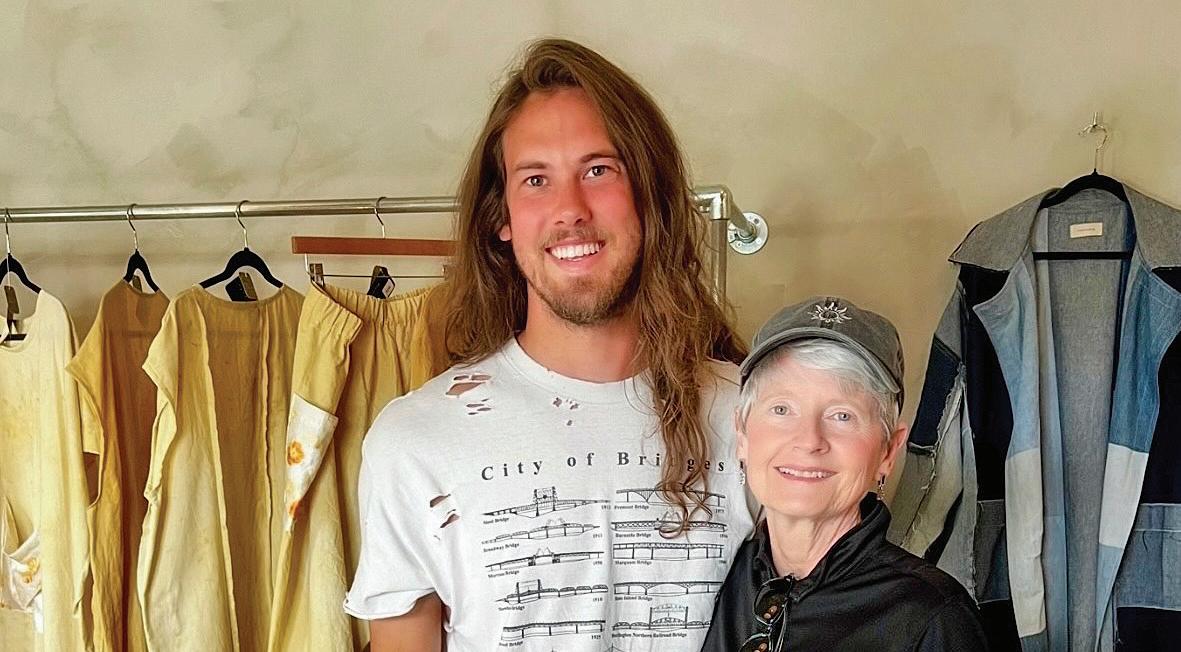
who advises SCORE’s clients to avoid burnout by considering the future challenges of scaling up and ask themselves, “Can I afford to expand my resources, hire more people so I’m not doing everything?”
It’s a thought-process that’s helped her mentees build sustainable success, and she’s watched many of them go from fresh-faced newbies to leaders in their niche, Berg says.
“There’s something just really fun and rewarding when you can establish a relationship with a client and see them succeed,” she said. “If you have in some small way contributed to their journey, that’s really exciting.”

Francis “Tex” Criqui, Mentor
His driver’s license may say Francis, but to his SCORE mentees, he’s Tex.
“I don’t answer to Francis real well,” he joked.
On his “third or fourth retirement” following 38 years at GM and later work as a business consultant, Criqui’s latest venture leading up to his time with SCORE was launching an incubator at Lawrence Tech in Southfield that helped nearly 70 startups get off the ground, thanks in no small part to their partnership with SCORE‘s Southeast Michigan chapter.

Each founder participating in the incubator was required to pair up with a SCORE mentor, explains Criqui. So, when he made his way north a few years ago, he decided it was time to return the favor.
Now a mentor himself, Criqui’s main focus is bringing order to the early chaos of entrepreneurship.
“My areas of expertise are startups, business models, business planning, project management,” he said, adding that over the many years he’s worked with startups, a major pitfall for founders is obsessing a little too much over their initial idea instead of considering how it might play – or fizzle – out in the real world.
“Probably more than 75% of them are working to refine their ideas and make it better and better,” he explained, “and they’re not talking to their customers.”
That’s why he urges his mentees to focus on one market to start, then build from there.
“If you’re going to launch a company, it’s a little bit like building a house,” he said. “You don’t start on the upstairs bedrooms.”


An Air Force veteran and Silicon Valley pioneer, Jim Radabaugh’s preamble to SCORE includes 25 years in the tech industry where he helped introduce “time-sharing,” the pre-internet precursor to today’s apps. But after the early 2000s tech bust, he pivoted Up North where he launched a boutique acquisition company that supported business owners in expanding or selling their businesses, along with building exit plans come retirement.

That career, explains Radabaugh, gave him two areas of expertise to help Traverse City’s small business community. The first is offering an outsider’s perspective.
“The challenge is very basic for some of these folks in the very early stages,” he said. “They haven’t thought through a business plan … part of it is just helping them focus.”
The second is guiding people through big transitions and navigating what he calls inflection points, helping entrepreneurs seeking growth to ask themselves, “Okay, now what do I get? What are my options? How do I handle it?”
Radabaugh, who joined SCORE just this last winter, says that besides getting a peek at the creative minds and ideas behind the startup community, it’s been neat to glean from the organization’s other mentors too.
“I came thoroughly impressed with some of the skills that these people were bringing into things,” said Radabaugh.


By Art Bukowski
Riding off into the sunset, so to speak, is what a lot of working folks dream of. Put in your time, hang up your hat and enjoy the fruits of retirement.
But for a variety of reasons, more retirement-aged folks than ever before are still working. A recent CNBC study found that the number of Americans aged 65 and older in the workforce surged by 33% from 2015 to 2024, one of several studies that show such increases.
Some of these people are doing it because they need the money. Others choose to stay working because it keeps them busy, sharp or involved. Plenty do it for a combination of these reasons.
The TCBN checked in with four locals who are still working in retirement age, albeit for far less time than they did during their careers.
Michael Matts, 76, is often spotted at American Spoon or Robert Frost Quality, two downtown retailers that are beyond glad to have him in a time when dependable employees are very hard to come by.
Matts, an Army “brat” with Michigan roots, served in Vietnam before spending a nearly four-decade career in historic preservation. He played a role in helping save the historic Building 50 at the Grand Traverse Commons and for many years ran the Chicago office of the National Trust for Historic Preservation.
He largely retired from that work in 2022 and later moved to Traverse City, where it soon became apparent that he’d need to get at least a part-time job to make ends meet.
“After several months of looking at the finances, I said ‘Hold on here,’” he said. “I need to have extra income from somewhere.”
Matts lives and spends plenty of time walking around downtown, where he made friends with Joe and Bob Frost, the owner and founder, respectively, of apparel and footwear boutique Robert Frost Quality. They invited him to start grabbing a few shifts, and he obliged. Matts himself asked to work at American Spoon, where he had come to know the manager. He now works up to 40 hours a week between the two locations in the busy season, though it’s often much less. He’s proud to do it and feels strongly that he and others like him are very important cogs in the downtown machine.
“I think that without people like myself doing this, the retail and probably restaurant industry would collapse,” he said. “We serve an important role.”
Retired folks are often more flexible and most don’t need health insurance, Matts says, two huge checks in the plus

column from the employer’s perspective. Both American Spoon and Robert Frost have leaned into other retired workers to grab shifts as the many young people who work in retail head back to school, Matts says.
“You can really sense their need, and you’re aware that you’re helping make their lives better,” Matts said of his employers. “And I take pride that they have confidence in me. I have run both stores
by myself, and there’s just great pride in knowing that you’re trusted.”
Ultimately, Matts’ work at this age and in this environment is a huge net-positive, he feels.
“It keeps you busy, it gets you out of the house and then it stops the bleeding [financially],” he said. “And it gives you a sense of community, both in terms of the associates you work with, but also with just interacting with people that come
into the store.”
Matts finds great purpose in those interactions, which are just as helpful to people as his expertise in selecting great retail products.
“You’re really an ambassador for all of Traverse City, too. People ask you about where to go get lunch, or where can I find this, where can I find that?” he said. “So we try to be aware of what’s going, what’s open, things like that.”

In a lot of ways, Steve Somers has got it made.
“I get paid to drive really nice cars that I like,” Somers, 70, said. “Volkswagens, Audis, Volvos and Cadillacs.”
Somers retired in 2017 after a long career in sales, much of it selling janitorial and packaging products. During this time, he was no stranger to travel.
“In my career I drove 40,000 miles a year. My territory was Traverse City to Sault. Ste Marie, and our corporate offices were in Muskegon and then Grand Rapids,” he said. “I was on the road a lot.”
He developed an affinity for Volkswagens during his working life, and took his vehicles to Serra in Traverse City for regular service. After he partially retired, the Serra folks suggested he drive cars for them. Not shuttling customers around in some dusty van, but instead delivering high-end cars to other dealers as part of dealer trades or delivering these cars (many of which are now bought through various online platforms) directly to customers themselves.
Somers is one of at least 20 such drivers for the Serra group alone, he says, and when the call comes, there’s rarely much notice.
“I’ll get a phone call from one of three sales managers, and it’s almost always last-minute,” he said. “A lot of times it’s two, three or four o’clock and it’s ‘Hey, can you drive to Dearborn tomorrow?’”
If he’s on the fence about taking the job, he has an easy way to decide.
“You can always say, ‘Well, what am I driving?’ And more importantly, if it’s a
delivery, ‘What’s the trade-in?’” he said. “Because I have been caught in some real pieces of crap.”
Generally speaking, Somers is selective. He avoids driving more than three times a week and stays within Michigan, avoiding the long trips and overnights. He is, after all, retired.
“I’ve got other stuff I want to do, too,” he said.
But he enjoys his driving work and expects to do it for as long as he can and they’ll have him. He gets to meet new people all the time (one of this favorite parts) and there’s always the thrill of the open road and where it will lead him.
“You get to see a lot of sunrises. You get to see a lot of Michigan that you didn’t even know is there,” he said. “Where the heck is Ovid?”
He also finds it exciting to experience the newest and best luxury cars on the market, even if they all are a little different.
“One of the first times that I drove a Volvo, all I wanted to do was turn off the heated seat, but here I was in Kingsley burning my buns off,” he said. “Where the heck is (the switch)? I know where it should be. I know where it is on a Volkswagen. I know where it is on an Audi.”
Finally, his past career makes him the perfect person to be driving expensive cars around, he says.
“When you drive as much as I did, if you’re not already, you become a very defensive driver,” he said. “Your head is on a swivel, pretty much all the time. You’re always looking ahead.”

Rick Bellingham, 80, is an established author and trusted leader when it comes to the healthy function of workplaces. As an organizational psychologist, he’s used scientific methods to understand and improve human behavior and interactions within organizations.
ble organizations.”
That these organizations are close to home is another big bonus for a guy who’s logged a lot of miles over the years.
From long-time best-sellers to fresh new sets, Fustini’s offers thoughtful gifts that make an impression. Simple to order, beautiful to give, and perfect for everyone. Enjoy complimentary custom gift inserts and 15% OFF orders $1,000+.
In this role he’s worked with hundreds of organizations and companies to create healthy, innovative and productive work environments. This often involves a transformation of some sort, he says, and he’s found deep fulfillment in shepherding these transformations over the years.
“It’s very satisfying when it happens, and it’s fun to watch,” he said. “There’s nothing better than seeing people achieve their goals.”
He began scaling back his work years ago as he got older. He still collected fees for his work through 2024, but now offers his services pro bono to nonprofit organizations and on a word-of-mouth basis.
On a local level, these organizations include the Grand Traverse Regional Land Conservancy, TART Trails, Norte Youth Cycling, Interlochen Public Radio, Rotary Charities and several more. Bellingham is selective about the work he takes on these days.
“At this point in my life, I’m really interested in nonprofits and great people who are doing great work in our area,” he said. “Traverse City has so many incredi-
“I’m not hopping on a plane every Monday morning and coming back Thursday night; I’m not traveling all over the world,” he said. “I really love being able to focus locally.”
For Bellingham, a full retirement will never be on the table. He finds too much joy and purpose in his work. Plus, the 20 or so hours a week he puts in now is exponentially more manageable than what he took on in the old days.
“I just feel very lucky because I’ve always been able to work doing things I love doing, and now, I can still [offer my services] without working those 80-hour weeks,” he said. “It’s not something I ever want to stop – as long as I can keep doing it, there will be nothing I like doing more.”
That said, he still enjoys plenty of time with family, and considers himself very fortunate that he’s chosen to continue work instead of being compelled by some other force to do so.
“I’m really lucky to have the choice of having balance,” he said. “A lot of people don’t have that choice, so I totally acknowledge my privilege in having a little balance in my life and having control of it.”





Rick Bellingham, 80, is an established author and trusted leader when it comes to the healthy function of workplaces. As an organizational psychologist, he’s used scientific methods to understand and improve human behavior and interactions
In this role he’s worked with hundreds of organizations and companies to create healthy, innovative and productive work environments. This often involves a transformation of some sort, he says, and he’s found deep fulfillment in shepherding these transformations over the years.
“It’s very satisfying when it happens, and it’s fun to watch,” he said. “There’s nothing better than seeing people achieve
He began scaling back his work years ago as he got older. He still collected fees for his work through 2024, but now offers his services pro bono to nonprofit organizations and on a word-of-mouth basis.
On a local level, these organizations include the Grand Traverse Regional Land Conservancy, TART Trails, Norte Youth Cycling, Interlochen Public Radio, Rotary Charities and several more. Bellingham is selective about the work he
“At this point in my life, I’m really interested in nonprofits and great people who are doing great work in our area,” he said. “Traverse City has so many incredi-
ble organizations.”
That these organizations are close to home is another big bonus for a guy who’s logged a lot of miles over the years.
“I’m not hopping on a plane every Monday morning and coming back Thursday night; I’m not traveling all over the world,” he said. “I really love being able to focus locally.”
For Bellingham, a full retirement will never be on the table. He finds too much joy and purpose in his work. Plus, the 20 or so hours a week he puts in now is exponentially more manageable than what he took on in the old days.
“I just feel very lucky because I’ve always been able to work doing things I love doing, and now, I can still [offer my services] without working those 80-hour weeks,” he said. “It’s not something I ever want to stop – as long as I can keep doing it, there will be nothing I like doing more.”
That said, he still enjoys plenty of time with family, and considers himself very fortunate that he’s chosen to continue work instead of being compelled by some other force to do so.
“I’m really lucky to have the choice of having balance,” he said. “A lot of people don’t have that choice, so I totally acknowledge my privilege in having a little balance in my life and having control of it.”
Craig Rosenberg is a financial planner who logged about 30 years in the industry, mostly at large firms, before breaking off on his own nearly 10 years ago.
He maintained an office for a while, but now mostly works from home with a small portfolio of clients who trust him to get the most out of their money. He is very hands-on in doing so, boasting that his clients are outpacing major stock market indexes by a considerable margin.
“Now, I’m focused on primarily managing clients’ money. I enjoy it immensely, and quite frankly, I’m good at it,” he said. “When you work for a big firm … you want to get the assets in and turn them over to managers. I’ve done that for decades, and I’m at the point in my career where I really didn’t want to do that anymore.”
He also didn’t want to work full-time anymore, so he’s down to around 25 hours a week, not including reading and research. At 65, slowing down – but not quitting entirely – was very appealing. There are still very busy days, but the overall load is lighter.
“As I like to say, I’m kind of retired. Some days, especially if I’ve got an active trade on, or if there’s markets moving, I might be working eight or 10 hours a day,” he said. “But other days, I’ll only work a couple of hours a day.”
He doesn’t promote or market himself, only taking on new clients by word of mouth. This allows him to keep his

workload where he wants it to be. But like others in his situation, it’s just not in his blood to retire full-time – at least for now.
“I’m a type A personality, and I’m not the one to retire and play golf five times a week,” he said. “It’s just not me.”
Rosenberg enjoys that he can do his work from anywhere (provided he has his laptop) and that his work keeps him plugged into world affairs.
“It keeps me dialed in and focused in terms of not only what’s going on in the
market, but within the world, because when you’re managing money, you’ve also got to know what’s going on in the world,” he said. “So I’m dialed in on the political end and the economic end as well.”


•
• Cleared site, spectacular views
• Private blacktop road
• Cleared site, spectacular views • Private blacktop road
• Electric, cable/high-speed internet, natural gas
• Electric, cable/high-speed internet, natural gas
• Bring your RV, seasonal camping permitted!
• Bring your RV, seasonal camping permitted!
• Storage building, horses allowed
• Storage building, horses allowed
• Short drive to downtown Traverse City
• Short drive to downtown Traverse City
• Close to stores, banks, post office, gas stations, and schools
• Close to stores, banks, post office, gas stations, and schools






• 5-acre estate size lots
• Surrounded by State Land!
• Private paved road with electric, high-speed internet
• Private paved road with electric, high-speed internet
• RV camping, storage building, horses permitted!
• RV camping, storage building, horses permitted!
• Direct access to recreation trails
• Direct access to recreation trails
• Just minutes to Elk Lake or Guernsey Lake
• Just minutes to Elk Lake or Guernsey Lake
• Short drive to Turtle Creek Casino, Grand Traverse Golf Resort
• Short drive to Turtle Creek Casino, Grand Traverse Golf Resort
• Easy commute to Traverse City
• Easy commute to Traverse City
at $244,900
















By Jeff Dennis, columnist
If you, like myself, have developed the rather unfortunate habit of trying to keep up with headlines, you’ve probably noticed that uncertainty is everywhere. Earnings projections are down, labor statistics weakening, tariff turmoil and heightened international tensions. How is one to make important financial decisions in the face of so much noise?
In short, good fundamentals and good planning. Establishing a plan for your money gives you a baseline of confidence to operate from when facing uncertainty. It helps you control the things you can control and stay prepared for the things you cannot.
For many, the long-held rule of thumb has been to assume that you will be able to retire on about 75-80% of your working income. I talk to many prospective clients who’ve given it no more thought than that – right up until their last day of work. Suddenly they’re retired with big dreams, but no plan.
These days, we see trends challenging that 75% assumption – more retirees envision an active, thriving retirement, finally free to go on a dream vacation, finish home renovations, pursue hobbies, or even buy a second home in Florida to become that fabled northern Michigan fowl, the “snowbird.”
Often these goals and lifestyles come with an increase in spending in early years. A major challenge that crops up here is the sequence of returns risk: Large distributions in the first few years of retirement – particularly in a volatile market – risk reducing your income-generating assets too quickly and harming long-term financial stability.
Put more simply: Less money working for you early can hinder your spending power for life.
Instead of visualizing retirement accounts as a “nest egg” to draw from, prioritize retirement goals into Needs, Wants, and Wishes, and then assign your finances to buckets corresponding to each.
Needs: In the first bucket, establish a baseline level of income required to maintain a comfortable lifestyle and fund it accordingly with fixed income or protected

assets. This helps to preserve the quality of life that you’re used to.
Wants: These are the goals that matter the most to you outside of the “basics.” These can have a little more flexibility, and you can balance your risk appetite against the growth you need to achieve them.
Wishes: This final bucket represents the goals that you’d like to target, but can adjust the most if life throws a curve ball at you, such as luxuries, annual travel, large gifts, etc. Typically you can take more risk on assets in this category, as they don’t jeopardize you as much if markets fall short. As always, consult with a licensed fiduciary to assist you in putting such a plan together.
For readers who are still working, starting a family, or worry they’ll never retire, the advice remains much the same: Make a plan, map your finances and stick to the strategy.
We’ve all seen articles about budgeting to “cut out avocado toast” or “skip the morning latte” and they’ve always seemed trite to me. Who’s eating all this avocado toast anyway? The financial stresses faced by many families today usually revolve around more immediate practical demands like housing and essentials. Start by understanding your budget –we’re not jumping headfirst into a new budget. Much like a fad diet, it’s easy to start strong then slowly start slipping into old habits and cheating on our diet. Figure out what your spending habits are now. That’s your budget. You can
do so by hand, or with a budgeting tool or app. Track the last several months of expenses and adopt three slightly different buckets: Survive, Grow and Thrive. Survive: Non-negotiables like housing, utilities, taxes. Ensure your critical bills are covered each month, then work to build an emergency fund. Start with an attainable goal, like $1,000. From that, keep saving up toward six months’ worth of basic expenses. Life will have another
Whether planning for your last day of work, or just getting started, adopting a fundamentally sound framework allows you to focus on the changes that matter the most in your life.
surprise in store for you – an emergency fund helps protect the rest of your plan. Grow: Prioritize habits or goals that will pay off for you in the long-term. Early, high-interest debt credit cards are killer here – 25%-plus interest rates are hard to out-save. “Grow” also includes contribu-
tions to retirement accounts. Ever hear the phrase “Pay yourself first”? Retirement contributions pay “future you” the money you’ll need to retire. Contribute at least enough to maximize employer match if offered. Or, if not provided benefits through work, consider starting an IRA with automatic contributions. Make a habit of checking annually and increasing your contributions as your career evolves.
Thrive: Fun money! These funds are for life-enrichment ranging from large purchases like family vacations to small luxuries like streaming services (or avocado toast).
Now take a step back and evaluate your buckets. Are you sacrificing long-term growth in favor of immediate amenities? Are there things specific to you that you can trim or shift? Every situation is different, what matters is finding a strategy that fits your life and making sustainable changes to your current budget.
Whether planning for your last day of work, or just getting started, adopting a fundamentally sound framework allows you to focus on the changes that matter the most in your life. Tune out the noise and feel confident in your financial decisions.
Jeff Dennis is a wealth advisor with 4Front Credit Union. He can be reached at jeff. dennis@front-lpl.com or (231) 943-2652. Securities and advisory services are offered through LPL Financial (LPL), a registered investment advisor and broker/dealer (member FINRA/SIPC).


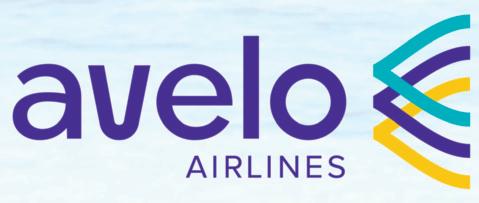





By Kierstin Gunsberg
Retirement age keeps on climbing, and with it, so does the number of women who are working later in life. According to the Bureau of Labor Statistics, nearly 70% of women between 54 and 59 are still plugging away in their careers while half of women ages 60–64 are pushing off early retirement in lieu of staying in the game.
But as women stave off that milestone, those numbers might be even higher if they weren’t hitting their career stride just as they also hit menopause – a transition that a recent study in the University of Oxford’s journal Occupational Medicine found to negatively affect work performance for women over 50, with 65% reporting it as a significant hindrance to their professional lives.
As Dr. Gustav Lo of Traverse City and Petoskey’s RegenCen and Cosmetic Skin & Laser Center explains, the crash starts with a gradual but noticeable dip starting right around 40, and is all too often written off by general practitioners as a part of aging that women should white-knuckle through.
“[Women] really suffer from a productivity standpoint and from a career advancement standpoint because just physically they’re in trouble,” said Lo, adding that somatic symptoms like hot flashes and insomnia can have a profound effect on work performance. “This is really flying under the radar.”
Lo, who previously practiced family medicine, has found that as his female patients
face growing expectations at work and at home, they tend to deny the difficulties of menopause, which can include heightened anxiety, brain fog and depression.
“They hide it,” he said.
And, when they do, he says, it’s that much harder for them to maintain a balance in the careers they’ve worked hard for, leading to burnout, turning down advancement opportunities, or stepping down altogether.
“It’s a real hidden occupational epidemic,” that shouldn’t go ignored, said Lo, who’s one of a growing number of clinicians advocating for Bioidentical Hormone Replacement Therapy (BHRT).
Plant-based and compounded to be identical to the hormones naturally produced by humans, BHRT is designed to replace the hormones that are lost with age while majorly subduing the negative symptoms that come when they drop.
Ask most gynecologists or women entering menopause what they know about HRT and it won’t be reassuring. How HRT could increase the risk of certain cancers is one of the largest and most publicized concerns.
“For the past 20 years there’s been this big kind of back-and-forth controversy of whether hormones for women are bad or good,” Lo said.
But things didn’t start out this way.
“[Women] really suffer from a productivity standpoint and from a career advancement standpoint because just physically they’re in trouble. This is really flying under the radar.”
– Dr. Gustav Lo, RegenCen and Cosmetic Skin & Laser Center
Back in the 1960s, the appeal of HRT kicked off in a big way. Presented as a sweet relief, millions of women underwent HRT to combat their menopause symptoms over the next few decades. That is, until the Women’s Health Initiative (WHI) released its study on the effects of HRT on women’s health in the summer of 2002.
“It gave a black eye to the whole hormone replacement thing,” explained Lo.
The findings suggested that women who participated in HRT were at an increased risk of stroke, blood clots and breast cancer, leading to a drastic drop in users across all age categories.
For those in the 52-65 age group, which overlaps with the younger than 60 demographic that doctors agree will benefit

most from the therapy, usage dropped 88% by 2020.
Nowadays, BHRT is a trending (billion dollar) industry
While HRT has faced a lot of pushback from both researchers and health experts since that damning study, more doctors, like Lo, say that BHRT reduces the risk of heart attack and stroke by about 40% when started around the time of menopause. Others, like clinician and Yale professor Dr. Mary Jane Minkin say that the original HRT study performed by WHI, (and which landed on the front page of every paper at the time it was published), was methodologically flawed from the getgo because of its small study group and
short duration, among other factors.
Despite the bad press, hormone replacement therapy as a treatment for menopause appears to be falling back into favor with patients. Global market research firm Data Bridge Market Research says the market for Bioidentical Hormones (which are used for several types of therapies, not just age-related ones) is valued at just over $4 billion and is expected to grow by another $2 billion by 2036 as advocates argue for the mental, physical, and longevity benefits of the revamped therapy.
Meanwhile, celebrities like Halle Berry, Kate Winslet, and Michelle Obama have been open about how BHRT has supported their own health while keeping their careers from stagnating.
Old school HRT is not that same as BHRT
While Lo says there aren’t enough large studies of BHRT, the ones that have come after the WHI study suggest that today’s BHRT is decidedly different, not just because it’s customizable to its users’ hormonal needs, but because its composition is much different – and appears less risky because of it.
The HRT of yesteryear was certainly progressive for the era, but it was also a rough first iteration. “Premarin,” the brand most widely used then, was made from pregnant mare urine and synthetic ingredients.
Perry Farm
“It was named after how they derived the hormone – Premarin stands for pregnant mare urine,” Lo explained.
And, that WHI study that originally linked HRT to a slew of serious health concerns was done on users who were primarily using these types of one-sizefits-all horse-derived hormones.
The bioidentical hormones used in BHRT, on the other hand, are plant-derived (usually from soy or wild yams) and are chemically identical to the hormones naturally produced by the human body.
“There is no difference between the bioidentical hormone therapy and human hormones,” said Lo. “It’s just pure estrogen or pure testosterone.”
Like Premarin, BHRT can be applied topically but at Lo’s clinics, the majority opt for tiny pellets inserted under the skin.
“We prefer the pellets because the pellets give a more consistent release and get levels where we want them to be quicker,” Lo said. “And they last about three and a half months. You don’t have to remember to put on a cream at a certain time of day.”
But, he says, some of his patients are less enthusiastic about committing to pellets, either because they’re afraid of being stuck with any hormone-induced side effects (like headache and nausea) or because their own health history calls for “really, really precise control,” where “topicals are better.”

Men are a growing hormone replacement demo
It’s not just women who are turning back to hormone replacement therapy – or who could add longevity to their careers because of it. Testosterone replacement therapy (TRT) – also used in some women’s hormone treatments – has risen nearly 50% in the past five years. At Lo’s clinics, men now make up about 30% of BHRT patients.
While men may not experience the same hormonally driven career disruptions that women face as they age, dwindling testosterone levels can still take a toll on professional performance.
“Male testosterone levels are around 900 when we’re about 30,” explained Lo. “By the time we’re 60, they’re closer to 300.”
That decline can bring on fatigue, mood changes, difficulty concentrating, irritability, depression and low energy.
Dan O’Brien
Project Manager, Burdco
Dan Brown
Business Development Director, Burdco
Barbara Woodward-Boonstra, Executive Director, Perry Farm Village
Tom Adams
Developer
Mike Brown
Owner, Burdco



“There’s very, very profound symptoms that happen with those lower testosterone levels,” reiterated Lo, who added that the impact of aging hormones isn’t limited to careers, but also affects overall quality of life during years when people should be enjoying retirement. “But because it’s kind of a normal part of aging, medicine has really ignored it.”
Build a true community asset, allowing area residents the ability to stay in the region throughout their days.
Burdco delivered our job on time, but also brought it in on budget, which is crazy in this economic climate. And subcontractors were eager to jump on board because they wanted to work with Burdco. We couldn’t have chosen a better partner to build Perry Farm Village.



By Eric Braund, columnist
be overwhelming. There’s a lot at stake, the options are confusing and the fear of choosing wrong is real – especially when your retirement, family legacy or financial peace of mind is on the line.
If you’ve reached a point where you’re asking, “Are we doing the right things? Could we be missing something important?” you’re not alone. Many people hit this stage in their 50s or early 60s, often after a big life change like selling a business, preparing for retirement or just finally having the time to get serious about long-term planning.
The most important thing to know is that choosing a financial advisor isn’t just a financial decision. It’s a relationship decision. You’re looking for a trusted partner to help you make thoughtful decisions during some of life’s most personal and high-stakes moments.
Here are three key things to look for when choosing the right advisor for you:
1. Don’t Get Distracted by Titles –Focus on Credentials and Clarity
In the financial world, job titles are often more about marketing than meaning. You’ll see terms like “Financial Advisor,” “Investment Officer,” or even “Vice President of Investments,” but these aren’t regulated, and they don’t guarantee any specific training, experience or ethical standard.
What does matter is the advisor’s credentials. Designations like CERTIFIED FINANCIAL PLANNER™ (CFP®), Chartered Financial Analyst® (CFA®), Chartered Financial Consultant® (ChFC®) or Certified Public Accountant (CPA) reflect a deeper level of education, ongoing professional development and a commitment to ethical practices.
Once you’ve verified that the advisor has the right qualifications, the next step is to understand how they work. Are they clear about what services they offer … and just as clear about what they don’t?
In short: Don’t let a fancy title impress you. Look at how the advisor is trained, how they’re compensated and whether their approach fits your goals.

2. Credentials Matter – But So Do Trust and Fit
Strong credentials are essential, but they’re not the whole story.
A great advisor brings more than technical knowledge. They take the time to get to know you, ask thoughtful questions and really listen not just to your financial goals, but to what matters most in your life.
Your first meeting is a good test. Are they asking about your values, your family, your vision for the future? Or are they jumping straight into products and portfolio talk?
Because this isn’t just about numbers. It’s about when you can retire, how to make your money last and how to feel confident about what’s ahead. Those are personal questions and they deserve a personal connection.
3. Choose an Advisor Who’s Legally Committed to Your Best Interest
One of the most important — but often overlooked — questions to ask is: “Are you a fiduciary at all times?”
A fiduciary is legally and ethically required to put your interests first. But not all advisors follow this standard 100% of the time. Some wear two hats: acting as a fiduciary when giving advice, but switching to a commission-based role when selling products. That dual role can create hidden conflicts.
To protect yourself, look for a full-time fiduciary who:
•Acts in your best interest in every situation
•Is fee-only, meaning they’re paid only by you not by commissions
•Offers transparent pricing with no hidden agenda
It’s also wise to work with an advisor who isn’t limited in what they can recommend. Some advisors are affiliated with large firms or product providers, which may restrict the strategies they can offer, and may be incentivized to promote certain products, such as annuities, proprietary investments or additional banking services. While these products aren’t inherently bad, it’s important to understand whether recommendations are being made based on your needs or the firm’s internal priorities.
Working with an independent advisor may offer added flexibility, since they’re not limited to a specific list of in-house products or services. That broader access can make it easier to build a plan around your unique situation, rather than fitting your needs into a preset model.
As always, what matters most is finding an advisor who prioritizes transparency, gives clear explanations and puts your interests at the center of the conversation.
Choosing the right financial advisor is one of the most important financial decisions you’ll make. It’s about more
than growing your investments – it’s about building a relationship with someone who helps you make sense of your finances, stay steady when markets get shaky and feel more confident about what’s next.
Referrals from trusted friends or professionals are a great starting point, but it’s still worth taking a thoughtful approach. Look for meaningful credentials, ask how they’re compensated and pay attention to how they communicate. Do they listen? Do they explain things clearly? Do they seem genuinely interested in your goals?
The right advisor will be someone who puts your interests first, offers objective guidance and takes the time to understand what matters most to you. When you find that fit, you’re not just getting financial advice –you’re gaining peace of mind.
Eric Braund, CFP®, CRPC®, is the founder and chief financial officer of Black Walnut Wealth Management, a fee-only financial advisory firm providing fiduciary guidance and personalized planning services to individuals, retirees and families with complex financial needs in Traverse City and throughout northern Michigan. He has more than 25 years of experience in coordinating the full financial picture – from retirement and estate planning to tax-smart investment strategies. Contact him at (231)421-7711 or visit BlackWalnutWM.com. Braund is an investment advisor representative with Dynamic Wealth Advisors dba Black Walnut Wealth Management. All investment advisory services are offered through Dynamic Wealth Advisors.



One of the easiest, yet often overlooked, components of an estate planning strategy is designating beneficiaries. Those whose estate plan includes a will or trust may wonder why this step is important. Transfer of some assets — such as life insurance policies, annuities, IRAs, retirement plans, and other employee benefit plans — can be based on beneficiary designations in place at your death. As your objectives for transfer may change over time, it is important to review those designations in context of your overall plan for asset transfer.



Confirm your designations align with your estate plan
Inventory your assets and determine which can have designated beneficiaries. Review the designations in place to make sure your preferred beneficiaries are listed for each asset. Consider choosing a successor in case your designated beneficiary does not survive you.
If changes are needed, be sure to complete each form as indicated. Requirements may vary from one financial institution to another or from one state to another. For example, the custodian of a retirement plan may require a spouse’s signature but a life insurance carrier may not. Similarly, some institutions may require a notarized original while others may allow you to complete the designation online.
As you acquire new assets, make sure to consider establishing beneficiary designations in alignment with your estate plan.
Identify any unintended implications to your overall estate plan
While creating designations may be a clear-cut process, identifying potential tax implications for your beneficiaries may not be so easy. Your tax and legal advisors can help you review your beneficiary designations to identify any unintended impacts to your beneficiaries.
Remember that your beneficiary designation forms are one piece in the larger estate-plan puzzle you have put together. It is important to consider how those designations — which operate outside your will or trust — may impact your overall strategy. For example, if your objective is to evenly divide all of your assets among your decedents, a designation could change that balance.
Your tax advisor can also help you weigh options for transferring taxable assets. If charitably inclined, you may consider naming a tax-exempt organization as a beneficiary of a taxable asset, such as a qualified retirement plan or nonqualified stock options.
Our firm is not a legal or tax advisor.















By Rebecca Teahen, columnist
You’ve spent decades building a life filled with love, purpose, and responsibility ... so why does financial planning still feel like someone else’s job? You’ve managed (almost) everything the world has thrown at you. Yet, somehow you find yourself side-stepping the personal financial and estate planning conversations.
Here’s the thing: You’re already making most of the financial decisions in your household. You’re making most of the household purchases. You make future plans, and you help ensure your family follows through on those plans. You’re quietly tweaking budgets, allocating resources where they’re needed, setting/balancing priorities and generally keeping it all together.
Yet, when it comes to the big question of “financial planning,” you step back. Maybe you’ve thought, “I don’t know enough about investing,” or “That’s his department; I don’t handle our finances.”
Yes. Yes, you do.
Even if you really don’t feel like you know enough about financial planning or investing, here are three critical reasons that it doesn’t really matter:
1. Neither does he. In fact, data from Fidelity’s Women and Investing Study (2021) shows that women outperform men by .4%, yet women still report feeling less confident than men when it comes to investing.
2. You have tons of information that is needed to inform your financial plans. Whether it’s a realistic view of monthly expenses or the thoughtful consideration of future needs to care for a parent or child, your voice will help your family build a better plan.
3. You can learn and you will. You’ll ask questions, you’ll put your family’s values first and you’ll follow the plan.
It’s true. Historically, women haven’t been warmly welcomed into the financial services world, whether as advisors, investors or even at the client table. So we’ve held back, opted out.
Let’s consider just a few of the many reasons you shouldn’t hold back any longer. First, the numbers alone speak to the strength of women as future financial leaders. McKinsey & Co. shared a recent study that projects female-controlled assets in the U.S. will double to $34 trillion by 2030.

This wealth transition is due in part, of course, to the fact that we have longer life expectancies than our male partners. So, we’re going to be managing family wealth whether we want to or not when our partners are no longer with us.
Additionally, we are still working to overcome the income inequality that persists in the U.S. today. Income and earning limitations, combined with longer life expectancy, demand that we play an active part in designing the financial future we want for ourselves and our families.
So, let’s commit together to moving past historic barriers to create a new era of financially savvy and confident women!
How? To get started, I’d suggest the following three priorities for women like you to help you achieve a greater level of confidence in your financial life.
Ditch the shame. First, let’s ditch the shame around a perceived lack of awareness or understanding of “finance.” Like so many other examples of baggage or “head trash” we’ve carried for generations, this one has got to go. No one knows everything about all categories of “finance.” Not even the professionals. If they tell you they do, find a new one. You don’t need to feel any more embarrassed about a lack of financial acumen than you do about your lack of expertise with any other niche skill set. The only critical difference is that financial planning does affect us all.
Ask for help. We hire nutritionists,
personal trainers, doctors, accountants, builders, attorneys and so many more professionals to help us do what we need to do for a healthy, productive life. A financial advisor can be a key strategic partner in your journey. Have you tried to meet with a financial advisor and been met with condescension, overwhelmed with meaningless charts and baffled by the endless use of jargon? This still happens, but it doesn’t mean you’re stuck with “that guy!” There are many local advisors who are much more evolved. Meet with a few until you find the right fit.
Make a plan. A good advisor will help pull together the countless puzzle pieces of your financial life and your personal goals to create your financial plan. This should include investment management, tax planning, estate plans, business plans and multi-generational considerations. It should evolve with you over time as your priorities may shift from retirement planning to education funding to family and charitable gifting, or whatever your life demands.
The key throughout all these pieces is that you’re involved. Or even more likely, you’re leaning into the crucial conversations required to create a strong plan you can truly be invested in. By building your team and your plan, you will undoubtedly feel a greater sense of confidence in your financial future. Does this mean that by the time you create your financial plan, you’re going to be an expert in stock picking and tax law?
Nope. And you don’t need to be, because you’ve got a team of people around you who are keeping tabs on those elements. It does mean that if (when) you have a question, you’ve got someone you can call and ask ... without feeling embarrassed.
When women show up and truly engage at the planning table, the outcomes are better for yourself, for your family and for your community. I hope this helps you take the first step toward the meaningful financial planning conversations you deserve, and to creating the financial future you envision.
Rebecca Teahen, CIMA® is a financial advisor with Baird, based in Traverse City and serving clients across the country. She helps women and families navigate life’s financial transitions with clarity and care, specializing in generational wealth, estate strategy and philanthropic planning. Rebecca is passionate about helping clients make confident decisions about the assets that matter most. The information offered is provided for informational purposes only. Robert W. Baird & Co. Incorporated does not provide legal or tax advice.
Sources:
www.mckinsey.com/industries/financial-services/our-insights/the-new-face-of-wealth-therise-of-the-female-investor
www.fidelity.com/bin-public/060_www_fidelity_com/documents/about-fidelity/FidelityInvestmentsWomen&InvestingStudy2021.pdf
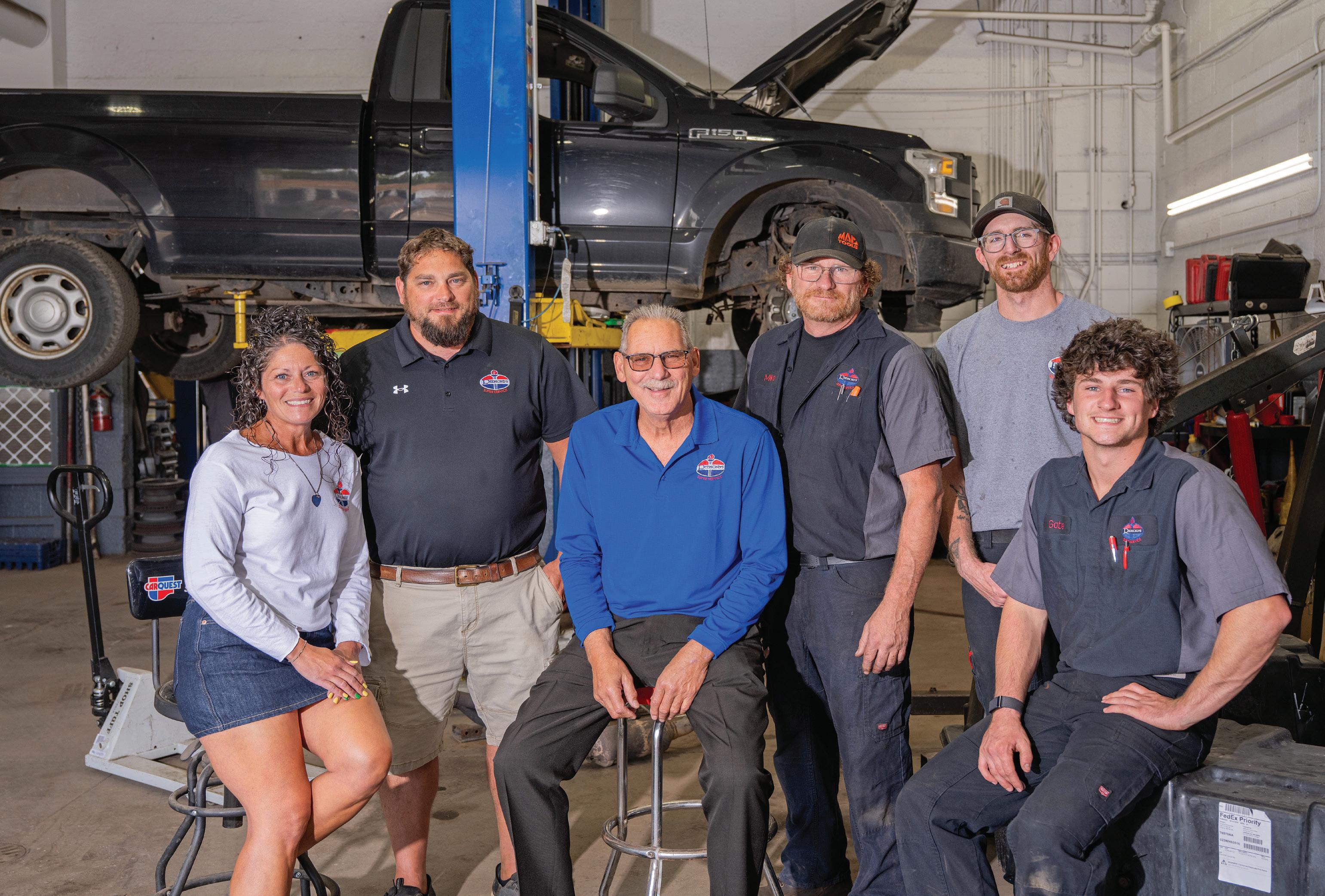
By Art Bukowski
John Redmond and his young family came to Traverse City in 1985 on a leap of faith.
Redmond worked with his father and brothers in the auto repair business down in Saginaw, specializing in accessories like cruise control, air conditioning and sound systems in addition to general repairs. Over the years, they noticed that a lot of their customers came from up north.
So why not head up north, plant a stake in the ground and start a shop closer to those customers?
Redmond came up with virtually no connections. Every new customer had to be earned. Every job was a precious gift. But what started small 40 years ago eventually blossomed into one of the region’s most dependable, trusted (and busy) auto repair shops.
Redmond Automotive passes to the next generation
It wasn’t some magic formula, special pricing or inside knowledge that built Redmond Automotive into what it is today, John says. It was just a lot of hard work, straight shooting and following through.
right, and the best advertising will be word of mouth.”
In September, Redmond passed the business on to his four children – Mike, Jacob and Dan Redmond and Kate Galla-
“They’ve got to be in it and they’ve got to love it. And [my kids] are both. They’ve shown it and they’ve proven it. They’ve worked so hard, and I’m so excited and happy that we can do this.”
– John Redmond, Founder, Redmond Automotive
“I think in the automotive industry – in any industry, really – honesty is your key. Build that trust. But it really does take time. You can’t just do it overnight,” he said. “Just make sure you do everything
gher – all of whom have worked with him for decades. It was always his dream to hand his business off to his kids, but for a variety of reasons, such things are never guaranteed.
Sitting in his Eighth Street shop, surrounded by those kids, he beamed with pride as he discussed passing the torch.
“They’ve got to be in it and they’ve got to love it. And these guys are both,” he said. “They’ve shown it and they’ve proven it. They’ve worked so hard, and I’m so excited and happy that we can do this.”
A family business
Redmond’s children, ages 30 to 45, have all worked for their dad in one way or another since they were little kids running around the shop floor. They were doing real, meaningful work and learning real, meaningful things in the way that only happens when you’re the child of a business owner.
Mike Redmond was maybe six or eight years old when he started getting his own hands dirty.
“[Dad would] be working after hours, getting stuff done, and it was just cool to be down there with him. Just to be by his side and watch, maybe take out a bolt or two,” he said. “I’d learn how to use a ratchet and the difference between the socket sizes, then how to put it all away in order.”
All in all, the siblings have loads of good memories about growing up in the car repair business.
“My dad always had to road test every vehicle that came in, before we worked on it and after,” Kate said. “So [us kids] have been picked up from school in a limousine, old beater pickup trucks, you name it. It’s such a fun memory. We never knew what we’d be riding in or what to look for.”
They all work full time at the shop full time now (a fifth sibling, Tilly Hill, is a special education teacher) and have worked at the shop for most of their lives. Not for every minute of their collective working careers, but mostly.
“I’ve traveled out a couple of times, but I’ve always ended up back here,” Jacob said.
John and his children report a remarkably harmonious working relationship that has developed over the decades. Each knows how the others tick. Each has the others’ backs.
“Fortunately we all get along, so that’s a big plus for sure,” Jacob said. “We do have fun … and I think any of us would do

anything for each other.”
“There’s not any one of us that could do this without the others,” Dan added. “We’re all parts in the [machine], and if one of us is out of it for too long, it hurts. That’s for sure.”
They are different enough, though, to provide a full spectrum of options for any personality that might walk through the door. Over the years, this has meant that certain customers gravitate to certain siblings.
“Even though it sounds silly, we all

have our own people that come in,” Mike said. “Someone only wants to talk to me, doesn’t want to talk to my dad or anyone else. I’m their guy.”
Work sometimes takes people away from family more often than they’d like. The folks at Redmond consider themselves lucky that they’ve got to spend their careers side by side, for (mostly) better and worse.

“We’re family, and we’re always together. You get done with the day here, and it’s like ‘Who’s showing up for the cookout?’” Dan said. “It’s just what we are – a tight family. It’s been a great experience.” Mike’s son Gabe also works for the business, marking the third generation at the Traverse City shop.
There are, of course, some longtime non-family members who work there and are pretty much as good as family, to hear the Redmonds tell it.
“We can’t do it without them,” John said. “You’ve got to have good workers behind you, and they are just fantastic.”



Welcome to the Boardman Building. A Historic Icon Reimagined.
Originially constructed in 1914 as a neighborhood school. Now, this iconic structure is undergoing a stunning transformation.
What You’ll Love:
12-Foot Ceilings & Exposed Brick Walls
2 Bedrooms + Flex Room
Oversized Windows
Private Balconies for each unit



Complete, Turnkey Residences with Designer Finishes
Ample Parking & Optional Detached Two-Car Garages







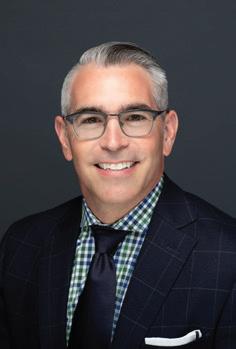

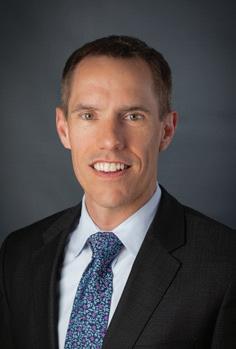
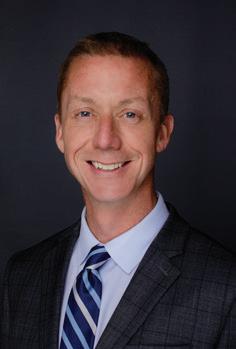




John worked with his dad, John Sr., who started his business back in the 1930s. It was always in the back of his mind that he’d like to hand his own business off to his children when the time came for him to retire.
But would they want it? Would they be ready?
“When you have a son or a daughter and they’re young, you just don’t know what they’re going to want to do,” he said. “But as time goes on and they get settled in, you can see what their likes are, their dislikes, how much heart they put into the business. As they got older and I got older, you could see that this is something that was going to work.”
In his own way he tested the kids over the years, and they’ve passed with flying colors.
“How involved do you want to be? How much do you want this?” John said. “These are things [they’ve shown me] on a daily basis.”
From a technical, operations and pure business standpoint, John has no doubt that the next generation is ready to carry the torch.
“They know a lot more at this age than I did in this business,” he said. “And these guys have not only learned from me, but they’ve also learned from themselves. That’s a big deal. It’s a sign of maturity.”
The kids themselves are invested and ready to take the reins.
“That’s why I’ve been in it for 25 years,” Dan said. “You’re not going to stick around something for 25 years if you don’t think you’re going to be a main part of it at some point. That’s the idea.”
There will be four decision-makers now instead of one (at least on paper), but in many ways things will be like they’ve always been.
“I can tell you right now that the last 20 years, [Dad] has talked to all of us before 90% of big decisions were made,” Mike said. “He always talks to us before he pulls the trigger.”
The Redmond siblings are very aware of how different their situation is when compared to their father’s experience 40 years ago. They get to take over a successful, thriving business with a deep customer base – something their dad had to build from scratch. They feel, therefore, a tremendous responsibly to continue that success.
“What [my dad] did, it’s a cliché I guess, but it was the American dream. He did it. I think that’s pretty awesome,” Jacob said. “To have the opportunity to continue that, I don’t know, I really can’t even put it into words. It’s bad ass. I don’t know how else to say it.”
The siblings don’t plan to change much about the business, though they all feel the pressure to keep making steps forward, even if they’re small ones.

“I’m of the mindset that if it isn’t broke, don’t fix it,” Mike said. “That said, every day you want to do better. You want to do more. Build your client base and your income. Take better care of people … Dad taught us that you have to invest in the business, and the business will take care of you.”
That will mean staying abreast of trends within the automotive business and in general, Kate adds.
“We take a lot of pride in staying relevant. Things like education, technology, tools, equipment, things our mechanics

know,” she said. “It’s a continual goal to stay on top of that kind of stuff.”
As for John, he’s now in “slow-down mode.” He’s not interested in fully retiring, but he also probably won’t be around as much.
“It’s been a great ride, and now I’m just pumping the brakes,” he said. “I have no anticipation of leaving. I still want to see my customers, I still want to stay involved, but the day-to-day stuff is moving on to the next generation … I have fun every day, and when I don’t have fun, it’ll be time to go.”
Exceptional care begins with genuine compassion. It’s why we’re here. Not just to heal and keep you healthy—but to care for you in ways that make all the difference. Because at Munson, we know that even the smallest of gestures can change everything.





In recent years, the home-building industry has faced a convergence of pressures: labor shortages, rising material costs, evolving codes, and an aging workforce. Northern Michigan’s rural and semi-rural markets illustrate these challenges on a microcosmic scale. While local data is sparse, state-level trends provide a useful lens – and a warning – for those watching the next generation of licensed builders.
The Home Builders Association of Michigan released a revealing snapshot of builder demographics in its 2025 “Age Data” report. According to the report, the average age of a licensed builder or contractor in Michigan is 56.42 years, and the median age is 58 years.
One encouraging countertrend: from 2023 to 2025, the number of licensed builders and contractors under age 45 grew by about 8%. The 35–45 age bracket alone saw an 11.6% increase. Whether that uptick is enough to offset the broader aging is still an open question.
Because licensing, project volume, and access to trade networks tend to concentrate in more populous or urbanized regions, there’s no public data specific to “northern Michigan” (the Northern Lower Peninsula and UP). Still, we can make informed inferences by combining what we know with local realities.
1 In less dense regions, builders often stay in business longer, handing operations down slowly or sustaining them well beyond typical retirement age. That means the “average builder age” locally is likely even higher than the state’s.








2. Lower population density, long distances between job sites, and smaller project scales make it tougher for younger entrants to get a foothold, especially those who can’t absorb early lean years.
3. Some local jurisdictions may rely more on general contractors or specialty subs, so many smaller builders might not hold full state licensing. That can skew the perception of “licensed builder” age downward (i.e., the true licensed group is older, while those doing smaller, unlicensed work are younger).
4. Anecdotal and regional media suggest that even in northern Michigan, younger professionals are stepping in. Reports in Marquette and surroundings note a modest but growing share of new licenses under age 45.

Taken together, it’s plausible that the average licensed builder in northern Michigan is in the 55–60 year range, with a substantial “long tail” extending into the 60s and early 70s.
This isn’t just an academic exercise, the implications hit home (literally):
• As more senior builders retire, entire offices, trade relationships, and institutional knowledge could vanish. If younger talent isn’t ready to take over, local building capacity might shrink.
• The trades are already under pressure. If fewer master builders exist locally to mentor rising talent, skill gaps widen.
• Older firms often have more institutional stability, but aging leadership may be slower to adopt new technologies, efficiencies, or sustainable practices, potentially raising costs or losing competitiveness.
In regions that already struggle to attract developers, an aging builder base elevates the risk that fewer projects will be started or completed.
If northern Michigan wants to shift the curve (and I think it should), here are steps worth exploring:
1. Tie younger workers to licensed builders through formal mentorship and incentive systems, so that the knowledge transfer is systematic.
2. Help defray the cost and time burden of licensing (courses, exam prep) to reduce entry friction for younger talent.
3. Elevate visibility: when the media highlights rising 30- and 40-something builders, it sends a signal that the path is viable.
4. As older builders near retirement, offer consulting or part-ownership roles to ease their exit and maintain continuity.
One missing piece is real numbers at the county or regional level. Building associations, municipalities, or universities might collaborate to gather age and licensing data to track trends more granularly.
So, what is the “average age of licensed builders in northern Michigan”? The best current estimate, anchored by state data and tempered with local insight, places it in the mid- to late-50s, with a median likely close to 58. But numbers alone aren’t destiny. The coming decade will test whether the next generation can step up before too many senior builders step out.
The Home Builders Association of Northwest Michigan is here to help you navigate the process of building your dream home. Our members possess the local expertise and experience to guide you through every step, from initial planning to final construction. Learn more at hbagta.com/.

Fueling Michigan today and tomorrow.
Every day, Michiganders depend on secure, reliable energy to heat their homes, fuel businesses, and power industries. Enbridge proudly delivers 55% of the propane used in Michigan.
We continue to modernize our energy infrastructure and further protect the Straits of Mackinac crossing by investing in the Great Lakes Tunnel.
As a North American integrated energy company, we’ve been delivering the energy the state needs for decades and we’re investing in Michigan communities and infrastructure. It’s how we’re building toward a better tomorrow.
Discover more at enbridge.com/Michigan.

Serra firing on all cylinders 18 months after Bill Marsh acquisition
By Art Bukowski
It was January 2024 when the Marsh brothers announced the sale of their dealerships to Serra Automotive, a move that had both auto insiders and the general public buzzing.
How would the large, multi-state outfit handle the acquisition of a long-standing local company with well-known owners and considerable goodwill?
Now, about 18 months after the deal closed, local Serra leadership sat down with the TCBN to discuss the transition and what lies ahead.
Bill Marsh Sr. started the Bill Marsh Auto Group in 1982 after purchasing a single local Buick dealership and rebranding it as his own. Over the years, the company grew to more than 300 employees who sold and serviced eight automotive brands at several dealerships in Traverse City, Kalkaska and Gaylord.
Bill’s kids – Bill Jr., Mike and Jamie –eventually bought the business from their father, who died in 2016. When they decided it was time to sell, they had a “very
short list” of people to approach. Mike Marsh told TCBN’s sister publication The Ticker that Serra Automotive Chairman Joe Serra was his first call.
Fenton-based Serra Automotive, like Bill Marsh Auto Group, is a family-owned company that started off with a single dealership – a Chevy store opened by founder Albert M. Serra in 1973. Since
Cadillac/Subaru from famed local businessman Otto Belovich. When the call came from the Marsh brothers, it was a no-brainer.
Not only was the Marsh group a very solid business, but it was also a good cultural fit.
Bill Sr. and Al Serra were friends who shared a lot of the same principles, Serra Traverse City executive manager Jim Tuohy says.
“The Serra organization is a privately
“You look at a playbook of one football team versus another team, and they’re similar. The whole goal is to get to the end zone, but how you get there is totally different. [Both Marsh and Serra] got to the end zone … but the really nice thing is that they had a number of plays that were much better than ours.”
– Jim Tuohy, Executive Manager, Serra Traverse City
then, the company has evolved into one of the top 10 privately held retail automotive groups in the United States, with more than 60 dealerships in seven states.
Serra already had established a presence in Traverse City about 10 years back when it bought Traverse Motors and Cherry Capital
held organization that believes in family values, and the way that Mr. Marsh ran his operations were almost identical,” he said. “Family values, ethics, etiquette, all of those kinds of things.”
Tuohy and co-executive manager Jerry Zezulka absorbed Marsh’s Traverse City
operations, a move that added about 200 employees and made Serra Traverse City by far the largest dealer in the region, selling about 10,000 vehicles a year, Tuohy says.
Marsh’s Kalkaska and Gaylord operations also went to Serra, but they’re managed separately under Serra’s network, which works in many ways like a franchise system.
Ultimately, Zezulka and Tuohy are glad the Marsh brothers sought out – and placed their trust in – Serra to continue the family legacy.
“They could have went anywhere,” Zezulka said. “What a great opportunity it was for us.”
There were many, many meetings before, during and after the acquisition that set the stage for a smooth transition. Despite its own successes, Serra leadership was determined to learn as much as it could from Marsh operations.
“We wanted to make sure that we weren’t going to just go in and say, ‘Hey, we do it better,’” Zezulka said. “We wanted to analyze what they were doing.”
The approach paid off in spades, Tuohy says.
“You look at a playbook of one football team versus another team, and they’re similar. The whole goal is to get to the end zone, but how you get there is totally different,” he said. “[Both Marsh and Serra] got to the end zone … but the really nice thing is that they had a number of plays that were much better than ours.”
It meshes well with something Tuohy says he’s preached to his staff and coworkers for his more than 40 years in the business.
“Be humble,” he said. “Have your eyes open and realize that we’ve got something to learn every day.”
The community and customers handled the transition from Marsh to Serra mostly fine, Tuohy and Zezulka say, though the most dedicated Marsh clients were a bit guarded at first.
“In the beginning, not so much anymore, the customers would challenge us a little bit – ‘I’ve been doing business with Marsh for 15 years and I love them, let’s see how you guys do,’” Tuohy said. “It was a pleasure for us to prove to our customers that we would be able to offer them the same level of service that they received from the Bill Marsh team.”
Serra has a strong presence in the southern half of the state (especially in the Flint area), and Zezulka believes this helped jump start trust in a town filled with out-of-towners.
“There are a lot of people that know Serra from downstate,” he said.

No major structural changes were made to business operations, and it wasn’t long before the two formerly separate Marsh and Serra teams melded, settled in and got to work. After more than a year of seeing them in operation, Tuohy and Zezulka have been impressed with the folks they brought over from Marsh.
“Usually when you acquire another dealership, the most valuable asset is the people inside of it, and that has proved to be true once again,” Tuohy said. “The associates we gained from the Marsh team are amazing people.”
The management team is almost entirely
the same, Tuohy says, though there has been some turnover among the rank and file. Staffing is a big problem, as it is with virtually every single business in the region.
“[Hiring] and retaining good people is a big challenge,” Tuohy said. “Our job is to get good people on the bus and then figure out what the best position is for them, and there’s not another asset of our company that has more ability to help us or hurt us than our human capital does.”
The problem is particularly acute in the “back of the house,” Tuohy said.
“Skilled trade, skilled labor, technicians, painters, parts people, people that
work repairing cars,” he said. “That’s been the hardest to find, retain and grow.”
The business has been strong overall, Tuohy says. They do not plan at this time to acquire or expand any further, but instead to lean into the daily things that will improve their core business as now structured.
“Our goal from a business standpoint is always to do a little bit better than we did the same month last year, and we have been realizing that,” he said. “Both the front of the house [sales] and back of the house [service] operations have been as expected, if not better. We’ve been very pleased.”




By Craig Manning
If you’ve ordered anything from Amazon.com in the past six months, you’ve probably noticed a subtle change on your order tracking pages. In the past, Amazon delivered many of its packages to northern Michigan through third-party carriers like UPS or the United States Postal Service. Nowadays, when you track an Amazon order to a local address, you’re more likely to see three simple words: “Delivery by Amazon.”
Those words are a sign that Amazon has come to town in a new kind of way, and they aren’t the only indicator. Local roads have recently become inundated with white vans emblazoned with orange “Delivery Driver” stickers, or blue trucks bearing the Prime logo – all part of Amazon’s local delivery fleet. And depending on what kind of products you order from Amazon, you might find that they make their way to you a little quicker than they did in the past.
These changes are outcomes of Amazon’s decision to establish a physical presence in northern Michigan. In the fall of 2023, the The Ticker, a TCBN sister publication, broke the news that a new e-commerce facility was coming to Blair Township in Traverse City. While not explicitly identified as an Amazon facility in early plans submitted to the township, the 66,000 square-foot warehouse has since been identified as a fulfillment center for Amazon’s Last Mile Delivery program.
More Amazon news broke in early 2024,
when State Rep. Ken Borton (R-Gaylord) announced that the e-commerce giant would also build a 42,500 sqaure-foot distribution center on eight acres of land in the Gaylord Industrial Park.
Both of those facilities have now been up and running for the better part of a year, and they’ve quickly made Amazon one of the bigger employers in the northern Michigan region. According to
contractors and use their own vehicles to deliver packages. The Amazon Flex app works similarly to other gig economy apps like Uber or DoorDash, where drivers can use the app to schedule work blocks and then pick up packages and make deliveries during those periods, earning money for each delivery they complete.
Amazon also utilizes what are called delivery service providers (DSPs), third-party
“For many in our rural region, access to steady employment without commuting long distances is a meaningful improvement in quality of life. We’re pleased to see Amazon investing here, because it signals confidence in the future of northern Michigan’s workforce.”
– Jessica Topp, CEO, Northwest Consortium
Paula Morrison, Amazon’s regional public relations specialist for Michigan and Ohio, Amazon’s facilities in Traverse City and Gaylord “are part of Amazon’s broader commitment to extending fast, reliable delivery service to customers in rural and small-town America.” Together, she says, the facilities “have created over 200 jobs for local residents since opening last year.”
Morrison did not specify how many of those jobs are proper Amazon employees versus independent contractors. Famously, Amazon hires many of its delivery drivers through the Amazon Flex program, where delivery drivers operate as independent
companies that contract with the e-commerce empire to cover deliveries in certain geographic areas. Graceful Logistics LLC, a Grand Rapids-based company, is one such DSP, and currently has job listings online for the Traverse City area. The listings, which include both full-time and parttime driver positions, identify “delivering packages for Amazon” as the primary work responsibility. The Graceful Logistics job listings also denote several key differences between a DSP delivery driver job and an Amazon Flex job, including hourly pay (rather than per-package pay), benefits and ability to use a company vehicle.
Grace Baumgartner, who is listed as the registered agent for Graceful Logistics, did not respond to a request for comment about how the relationship between Amazon and a DSP functions. Baumgartner’s LinkedIn page lists several jobs in the Grand Rapids area, but also identifies her as the operations manager for another Amazon DSP: S&C Enterprises in Boston, Massachusetts. That job, Baumgartner’s profile states, involves working “directly with Amazon on problem-solving, scheduling, hiring, firing, routing, vehicle maintenance and much more.”
Not all Amazon jobs in the region are contract labor, though. Recent Indeed listings for Traverse City also include parttime and full-time employment opportunities for Amazon delivery station warehouse associate roles, as well as a higher-paid position as an “area manager 2026.” Those jobs are both directly with Amazon.com.
The number of Amazon jobs in northern Michigan is also on the rise. On September 17, the Michigan Works! Northwest Consortium in Gaylord hosted an Amazon hiring event at its headquarters, touting “competitive wages, flexible schedules, [and] amazing benefits,” and noting the possibility for attendees “to accept a job offer on the spot.”
Jessica Topp, CEO for the Northwest Consortium, says her business services team “has been working closely with Amazon from the very beginning” of the company’s move to open a facility in Gaylord, supporting “their talent recruitment efforts
through hosting hiring events, Employer of the Day spotlights and ongoing job fairs.” Through that work, Topp tells the TCBN that she’s witnessed a positive impact for the local economy in Gaylord and throughout Otsego County.
“The facility is helping diversify the local job market and provide opportunities close to home,” Topp said. “For many in our rural region, access to steady employment without commuting long distances is a meaningful improvement in quality of life. We’re pleased to see Amazon investing here, because it signals confidence in the future of northern Michigan’s workforce.”
Nicole Blonshine, township supervisor for Blair Township, is also bullish about Amazon’s impact on her hometown, though she admits that her “regular, direct contact” with Amazon occurred mostly during the construction process for the Chum’s Corner facility. Beyond job creation, she says she’s noticed faster deliveries since Amazon came to town, and says that many of the concerns locals had about the warehouse haven’t come to fruition.
“I haven’t received any traffic complaints specific to Amazon vehicles coming and going from the facility,” Blonshine said. “I know that was a huge concern of many prior to the facility being built, but it seems that Amazon has stayed true to their word and that the major ingress and egress times
“The reception from both customers and employees in the Traverse City region has been positive, and we look forward to continuing to grow our presence and investment in northern Michigan.”
– Paula Morrison, Amazon’s Regional Public Relations Specialist for Michigan and Ohio
of the trucks are during ‘off peak’ hours. I am also not aware of any accidents involving an Amazon vehicle.”
What locals might notice, Blonshine says, is more traffic at gas stations around Chum’s Corner.
“I was just talking to our emergency services director regarding Amazon, and he mentioned to me that he has certainly noticed a huge increase of Amazon trucks at our local gas station fueling up,” Blonshine said. “He said often he must wait in line to get to the pump


because of the Amazon trucks.”
But Blonshine sees that extra traffic as proof that Amazon is “a bonus to our other area businesses,” given that it’s leading to additional spending in the community.
Asked for key indicators regarding Amazon’s performance in northern Michigan since launching here – such as any localized uptick in memberships to Prime, the subscription service that offers free deliveries, among other perks – Morrison shares the following statement.
“While we don’t disclose specific
membership data by region, our delivery stations in northern Michigan allow us to provide improved delivery speeds to customers throughout the area, helping us better serve local communities. More customers than ever will be able to shop a wide range of popular items, including everyday essentials, for delivery within hours. The reception from both customers and employees in the Traverse City region has been positive, and we look forward to continuing to grow our presence and investment in northern Michigan.”




years in, NMC’s drone program is soaring ever higher

By Craig Manning
It started almost by accident.
When Tony Sauerbrey came to Northwestern Michigan College (NMC) in August 2006, it wasn’t in his current capacity as program coordinator for the school’s Uncrewed Aerial Systems (UAS) department. In fact, at the time, that program didn’t even exist.
Instead, Sauerbrey was brought into the fold at NMC to serve as the chief flight instructor for the college’s burgeoning aviation program. The job moved Sauerbrey to Traverse City from his previous job as the assistant chief flight instructor at the University of North Dakota, and as he made his way east, drones weren’t even on his mind.
“It wasn’t too long after [I came here] that me and the aviation department director at the time, Aaron Cook, started looking at the future of aviation,” Sauerbrey recalled. “It just so happened that, right around that time, the whole drone thing was coming on the scene. Granted, drones were more for military-type applications back then. But the people in that industry, they could see the commercial potential, and so could Aaron and I.”
While drones hadn’t been on Sauerbrey’s mind when he’d taken the job at NMC, he was interested in the technology.
“I have a strong background building and flying remote control airplanes,” he said. “I’ve done that since I was a kid, and actually still do.”
In other words, when the idea of add-
ing a drone component to NMC’s aviation curriculum became a serious topic of conversation, it wasn’t a big reach for Sauerbrey to take the lead. And so it was that, in 2010, NMC began offering its first courses focused on UAS – albeit, in a relatively primitive form.
“In 2010, the things that we think of today as a drone – the little multi-rotor machines – that stuff wasn’t around yet,” Sauerbrey laughed. “We were mostly working with airplane-style drones and integrating small autopilot systems onto them. It was pretty low-tech, all things considered.”
Low-tech or not, NMC’s introductory UAS courses caught the eye of students and became more and more popular with each subsequent semester. Before long, Sauerbrey was spending so much time on drone stuff that it no longer made sense for him to be the chief flight instructor for the aviation school.
“I was so busy with UAS stuff that the college made the decision to create a UAS management position, and to switch me over from traditional aviation to overseeing the unmanned part of the training,” he said.
In those early days, NMC’s pioneering drone program relied on a series of key partnerships to stay airborne. During the first couple years, especially, Sauerbrey says the department was “getting much of our equipment through partnerships with a few of the companies that were starting out developing drones for the industry.”
“A
lot of high schools are now starting to dabble with drones, so we’re expecting to see our program ramp up even more.”
– Tony Sauerbrey, Program Coordinator, NMC Uncrewed Aerial Systems Department
Equally important was an early assist from Dorance and Julia Amos of Amos Farm in Williamsburg, who offered up some land they own out in Yuba to serve as NMC’s de-facto airfield.
“That really helped us a lot,” Sauerbrey said of the team-up with the Amos family. “One of the challenges with this program is that we can’t really fly drones from our aviation campus, being so close to Cherry Capital Airport. It’s just a little too busy, with that control tower being right there. So, being able to go up 10 miles or so to the northeast and have a really good flight location where we’re not bothering anybody, that was really instrumental to getting the program off the ground.”

The UAS program has grown continuously over the course of its first 15 years. In 2013, NMC introduced an associate’s degree in engineering technology that incorporated a specialty in UAS, expanding the appeal of the program outside of the realm of aviation. And in 2015, when NMC netted a $2 million Community College Skilled Trades Equipment grant, the college allocated $405,000 of it for the expansion of the UAS program’s fleet of drones.
The biggest milestone came in 2016, when the Federal Aviation Administration (FAA) established the first industry-wide regulations for commercial drone pilot’s licenses.
“That really started to open up the
industry to a lot of different applications, and where we can go and what we can do have just continued to grow from there,” Sauerbrey said.
That growth included a 2017 partnership with Michigan State University’s Institute of Agricultural Technology, to train MSU students on using drones for agricultural applications; a 2020 selection by the FAA to be a part of a then-brand-new Unmanned Aircraft Systems-Collegiate Training Program; and an alliance with the Michigan State Police, where troopers would come to NMC’s Aero Park Campus for training in how to use drones and underwater ROVs. In 2023, all the demand led NMC to launch a standalone associate’s degree in UAS, replacing the UAS specialization that had been housed as part of the engineering technology degree.
Along the way, the program has spun off a handful of entrepreneurial success stories. The first big one was Interactive Aerial, which formed in 2014 with the goal of developing a drone “for internal infrastructure inspections – specifically large confined space, GPS-denied environments.” Built by four NMC alumni, the business went on to win Traverse Connect’s Emerging Business award in 2020, and was ultimately acquired by Nexxis Technology in 2022; it is now based in Texas.
Another business on the NMC drone
In 2013, NMC introduced an associate’s in engineering technology that incorporated a specialty in UAS, expanding the appeal of the program outside the realm of aviation.

program’s family tree is Blue Aloft, which offers a variety of aerial photography, videography, and data collection services. That business was started in 2022 by Terry Paquet, a retiree who went back to school at NMC to get his drone pilot’s license after a career that included lengthy stints at Dow and with his own independent management consulting firm in Traverse City, as well as board leadership seats for local charities like Habitat for Humanity Grand Traverse and Child & Family Services of North-
western Michigan.
Also incubated out of NMC’s drone program is Hybrid Robotics, a local startup co-founded by NMC alumnus and recent TCBN 40Under40 inductee Ryan Mater. The company began as a college project and has since morphed into what Mater describes as “a leading force in marine robotics.” Hybrid Robotics works to “design and manufacture robotic solutions for research and inspections,” with a unique technology component that enables a drone to land on water and
deploy a tethered underwater ROV.
With these success stories and more under NMC’s belt, Sauerbrey thinks the college’s drone program will only continue to grow in the future. For one thing, he says, there is simply a lot more awareness about the broad range of applications for drones, including among young people.
“A lot of high schools are now starting to dabble with drones, so we’re expecting to see our program ramp up even more,” he noted.
As the program grows, though, it’s


The Up North Center solar array in Elk Rapids has passed the five -year mark with uninterrupted power production.
The system monitoring platform was replaced this Spring, and the array receives an annual cleaning. Each year the cleaning yields a 6- 8% increase in production.
With the award incentives from the USDA 25% Rural Energy for America Program Grant and the 30% Federal Tax Credit, the Up North Center's investment is quickly approaching 100% payback. Achieving the financial and sustainability goals .












also having to evolve and change to suit the UAS industry. For instance, according to Sauerbrey, the FAA “just released their notice of proposed rulemaking for what they call Part 108” – a rule that, if/ when it is adopted, would open the door for UAS operators to fly drones Beyond Visual Line of Sight (BVLOS). Under existing drone licenses, operators can’t fly beyond their field of vision without an FAA waiver. BVLOS will expand the industry uses of drones substantially, which will in turn demand significant changes to the NMC curriculum.
“We’re already planning on integrating more training for BVLOS and the regulatory requirements for being able to fly those types of more advanced missions,” Sauerbrey said. “And then, as the industry develops and changes in that way, the types of aircraft are going to change, too, because as the aircraft need to fly further distances, typically, you’re looking at an airplane-style drone to be able to do that, versus the multi-rotor machines we typically think of as drones today.”
NMC already has a few local partners that are extremely interested in what BVLOS drones could do for the region.
One is Traverse Connect, which has been working with NMC and Munson Healthcare to “test and scale the use of unmanned aircraft systems for use cases including delivery of medical supplies and other critical healthcare services to improve rural health outcomes.” Those parties conducted more than 100 flights this past spring to test “the capability of drone delivery between Munson Healthcare facilities and partner facilities that Munson works with, mostly for the delivery of lab samples,” according to Camille Hoisington, Traverse Connect’s director of ecosystem development. Those flights were all within visual line of sight, but a currently pending FAA waiver should


allow the project to move into BVLOS test flights this fall.
Another partner interested in BVLOS drone flights is Cherryland Electric, which this past spring engaged the services of NMC drone instructors like Sauerbrey to assist with recovery efforts in the wake of the devastating ice storm that hit the Gaylord area in March.
“We went out not too long after that storm hit, just flying down rights-of-way and identifying power lines and poles that were down,” Sauerbrey said. “We have a waiver to be able to fly BVLOS in certain circumstances, and that allows us to do power line inspections. So, because of that, we were able to sit in one spot and fly the drone long distances to assess the power lines that were down.”
Working with Cherryland, NMC pilots were able to inspect some 75 power poles in a matter of 20 minutes – a task the college reported “would have taken a day using traditional methods” in a press release from earlier this year.
“It’s an example of how useful BVLOS can be for things like emergency response,” Sauerbrey said of the project.
“In this case, it was helpful for getting the power back on quicker, but BVLOS drones could also be really helpful for any type of search-and-rescue operations, or really any type of first response action.”
Whenever BVLOS does become more widely allowed, Sauerbrey thinks it will be a total gamechanger – not just for NMC’s program, but for the drone sector at large.
“This whole Part 108 thing, it’s the second coming of the industry,” he says. “The first step was getting that commercial drone license back in 2016. Now, with BVLOS, it’s all being reinvented all over again. So, it has been a pretty amazing ride so far, and we’re not done yet.”





















By Chris Wendel
Most of us recall the Dos Equis beer ads featuring a fictional character labeled “The Most Interesting Man in the World,” whose feats ran the gambit from changing foreign policy through his small talk to parallel-parking a train. The ad campaign ended with an ad narrator declaring, “His only regret is not knowing what regret feels like.”
George Raveling may be lesser-known to some readers, but his array of life experiences places him in that most interesting category. Raveling was the person that persuaded then-pro basketball rookie Michael Jordan to sign a shoe deal with a fledgling company named Nike and asking for (and getting) the typed notes of Dr. Martin Luther King’s famous “I Have a Dream” speech.
Raveling wrote his book “What You’re Made For” not to recount his unique life but more to provide life lessons as someone who never stopped learning, listening and improving.
At an early age Raveling was an orphan, raised for a time by his grandmother before Catholic Charities in his hometown of Washington D.C. placed him in a boarding school for boys from broken homes in rural Pennsylvania. The abrupt change was a positive one for Raveling, who was provided encouragement and structure. The school had mentors for younger students. Raveling’s mentor, Jerome Nadine, encouraged Raveling to play basketball.
Raveling further pursued basketball in college where he realized that to succeed, one had to excel in an area or with a skill that others may have minimized. Raveling studied the situation and devised his own set of drills to perfect this part of his game, making him invaluable to his team.
“What You’re Made For” uses these life experiences to provide a series of professional development tools that are relatable to anyone, even those not too familiar with sports. Raveling would go on to a successful playing career but his major influences with others first came while coaching at Washington State, Iowa and the University of Southern California.
Raveling’s quest to excel and improve led him to become assistant coach for the U.S. Olympic Team, a pioneer for bringing international talent in professional basketball, Global Basketball Sports Marketing Director for Nike from 1994 to 2025, and a mentor to countless athletes, professionals and others.
All of these accolades provide perspective on the author, but the meat of “What You’re Made For” is its well-organized chapters that help readers with interesting vignettes for leading a successful life. For example, the chapter “Win the Day” gives readers practical strategies for prioritizing what’s important each day while breaking each day into manageable sections that can maximize effort.

By George Raveling and Ryan Holiday
B ack to that “Most Interesting Man in the World” notion, it’s worth noting that when Raveling convinced Jordan to go with Nike back in 1984, it set the course for Nike to become the world’s largest shoe company. In the 2024 movie “Air,” Raveling is portrayed by actor Marlon Wayans.
A series of random events led to Raveling being on security detail when Dr. King spoke in front of the Lincoln Memorial on August 28, 1963. After King delivered his “I Have a Dream” speech, Raveling, in a moment of spontaneity, asked King if he could have the typed notes, which he kept for more than 50 years before donating them to Villanova University.
Sadly, “What You’re Made For” was published just months before Raveling died of cancer in September. The book is an ode to Raveling’s quest to learn, his penchant for reading and his genuine interest in listening to others. This curiosity comes out throughout the book.
As he aged, Raveling had the urge to take his accumulated skills and do more while adjusting his focus to help others.
“What You’re Made For” is recommended for anyone, at any age, seeking a fresh perspective for living a meaningful (and interesting) life.
Chris Wendel works for Northern Initiatives, a mission-based lending organization based in Marquette, Michigan. Northern Initiatives provides funding to businesses throughout Michigan and online business resources through its “Initiate” program to organizations and small business owners throughout the United States. Wendel lives and works in Traverse City.






WEDNESDAY OCT 1 • 5-7PM



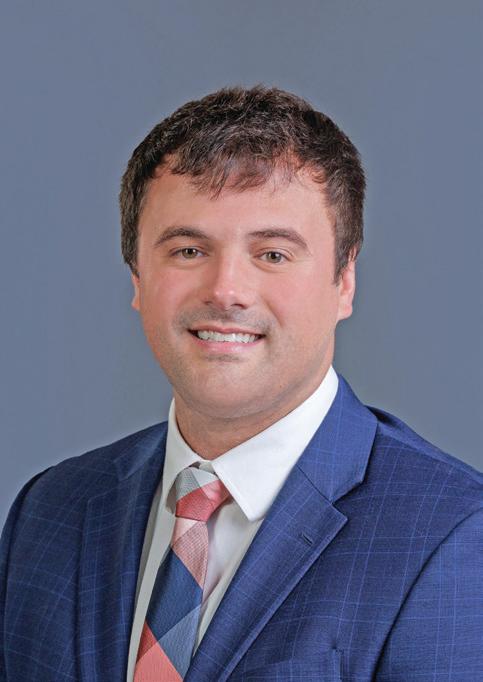


1 - Megan Stilwill , D.O., has joined the direct primary care team at Table Health in Traverse City. In addition to pediatric osteopathic medicine, Dr. Stilwill’s expertise also includes support for children experiencing adversity and trauma, and specialized care for developmental disabilities and neurodivergent disorders.
Munson Healthcare announces the following:
2 - Brandon Ahlgren , M.D., recently joined the rheumatology team. An early interest in joint and bone pathology ultimately led him to a specialty in rheumatology.
3 - John Fanta , M.D., is now a part of the neurology team. Dr. Fanta has a special interest in electromyography and nerve conduction studies.
4 - Brent L. Flusty , D.O., recently joined Munson Healthcare Neurorosurgery. Dr. Flusty chose a career in neuroscience due to the rewarding nature of stroke and neuro-intervention.

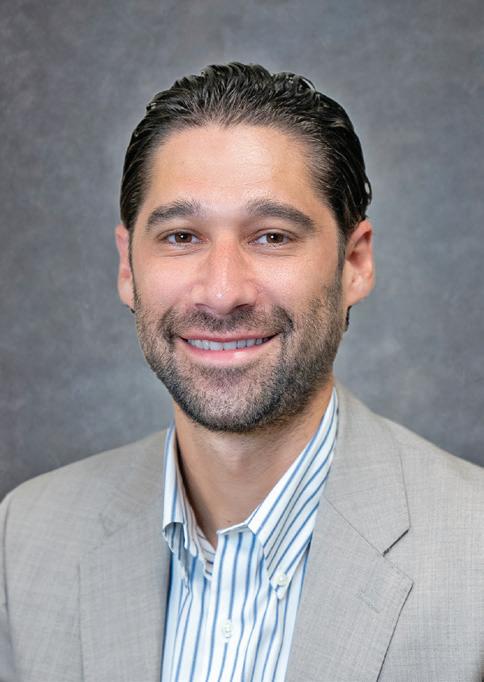
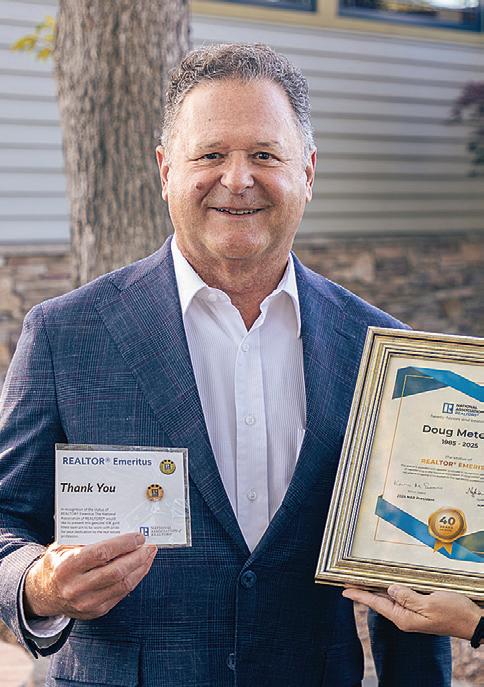

5 - Sebastian Garbsch has joined CENTURY 21 Northland in Traverse City. He brings a background in real estate investment to his new role.
6 - Libbey Hansen has joined Aspire North REALTORS® as its new administrative assistant. Hansen brings a broad educational and professional background to the position.
7 - Doug Meteyer , founder and broker of Keller Williams in Traverse City, has been granted REALTOR® Emeritus status by the National Association of REALTORS® (NAR). The designation is reserved for REALTOR® members who achieve both 40 cumulative years of membership in NAR, and a minimum of one year of service at the national level. Locally, Meteyer served as Aspire North REALTORS® (Traverse Area Association of REALTORS®/TAAR) board treasurer and director before becoming president in 1992.

8 - Dan Stiebel , associate broker with Coldwell Banker Commercial Schmidt Realtors in Traverse City, recently earned the Society of Industrial and Office Realtors designation. The honor recognizes commitment to excellence in the industrial and office real estate sectors. Stiebel has been in the industry for 23 years.
leaseback is negotiable or buyer could use the entire building if needed. Many individual offices of various sizes. Close to Munson Hospital surrounded by a variety of Medical Practices. Virtual tour Online –MLS# 1919691 - $1,499,000.

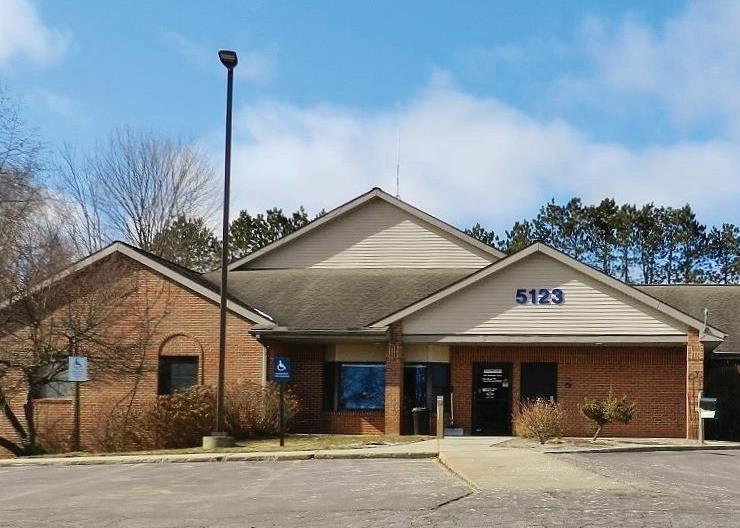













OCTOBER 18
OR TREATING THROUGH THE PINES
5-7 PM EERIE HOUR: 7-8 PM HIKE + BIKE + RUN ON 8+ MILES OF SINGLE & TWO TRACKS 18-HOLE, PAR-72 COURSE FOR ALL LEVELS OF PLAY
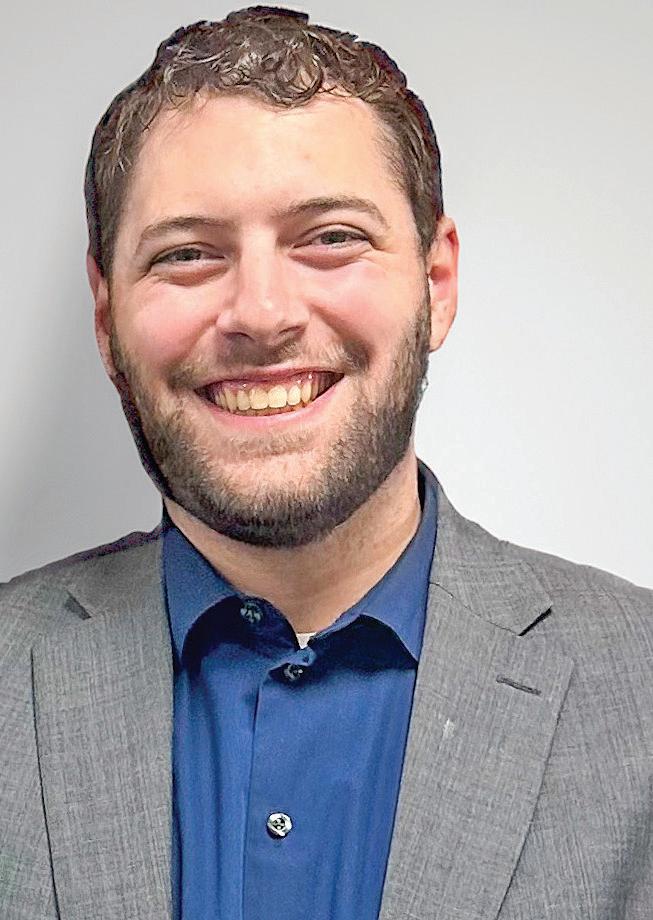
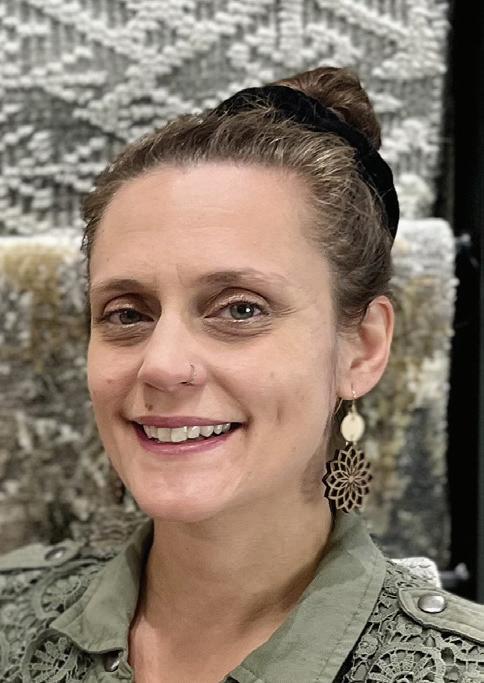
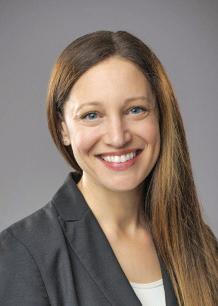
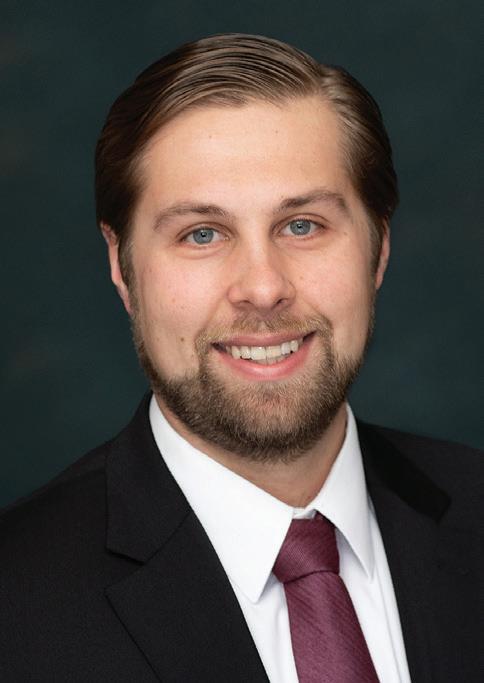


9 - Dakota Baker has joined Traverse Connect as director of the Northern Michigan Chamber Alliance and will also advocate on behalf of businesses represented by Traverse Connect. Baker brings experience in public roles in state government, congressional campaigns, and as the direct liaison for Congressman Jack Bergman. Most recently, Baker was the deputy chief of staff for Michigan Senator John Damoose.
10 - Danielle Briggs is the newest member of the sales and design team at Carpet Galleria in Traverse City. Briggs brings a background in creative and interior design to her new role.
11- Jeff Carpenter has joined Sonny’s Body Shop in Traverse City as estimator. Carpenter brings more than 31 years of experience in the collision repair industry, including with Bill Marsh and Serra.
12 - Jeffrey Caviston has joined the Traverse City Philharmonic board of directors. Caviston is vice president and senior trust advisor at Huntington Bank in Traverse City. He also serves on the Northwestern Michigan College Foundation board and the Traverse Connect finance committee.


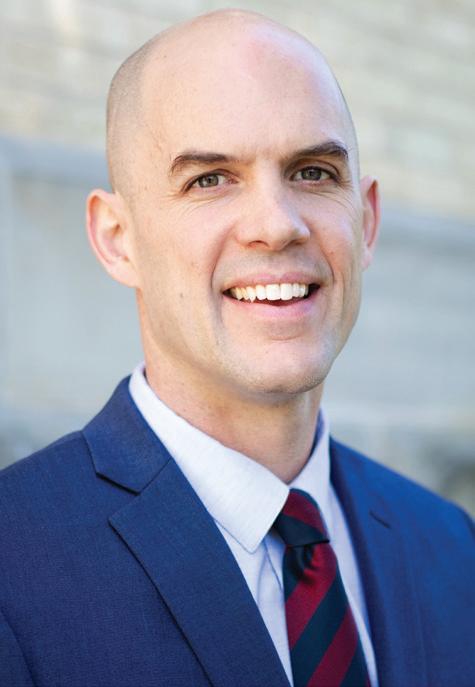
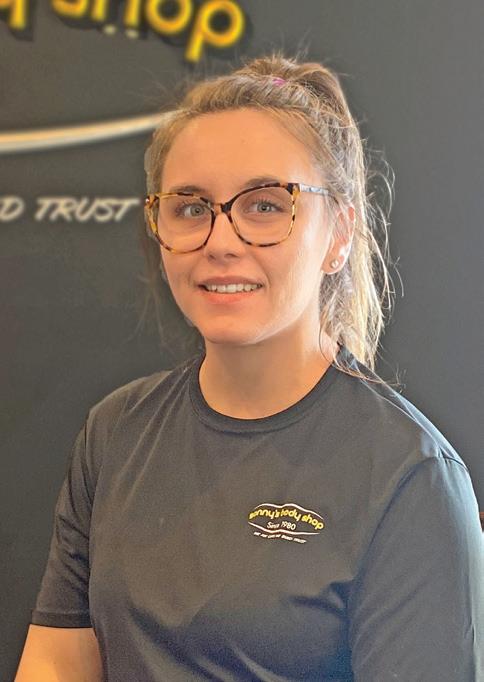
13 - Jenelle L. Neubecker has joined Smith & Johnson Attorneys in Traverse City. Neubecker brings extensive experience in civil and appellate litigation and is licensed to practice in Michigan and North Carolina.
14 - Jul ius Moss has joined the Traverse City Philharmonic board of directors. Moss is a partner with Bowerman, Ford, Clulo & Luyt, P.C., in Traverse City, focusing on corporate governance, legal compliance and strategic planning.
15 - Brad Repke has been promoted to senior associate at Breneman Advisors, LLC, in Traverse City. Since joining the firm in 2022, Repke has been a key contributor to the firm’s mergers and acquisitions and business valuation engagements. Prior to joining Breneman, Repke spent more than a decade in the retail finance sector.
16 - Tiffany Slade has joined Sonny’s Body Shop in Traverse City as a detailer. Slade brings a background in sales and retail to her new role.
Please send Newsmakers by the 10th of the month to news@ tcbusinessnews.com



Regional and state leaders gathered Sept. 12 to break ground on the Freshwater Research & Innovation Center at 13240 S. West Bay Shore Dr., the future site of the center on Discovery Pier’s campus. Pictured giving remarks is CEO Matt McDonough. The $28.9 million project is a collaborative effort of Discovery Pier, NMC, Traverse Connect, Michigan Technological University and 20Fathoms.



Completing












MSUFCU is the Unlimited Cash Back Credit Union! When you open an MSUFCU checking account, you’ll unlock exclusive member benefits, financial education, and digital tools like CashBack+!
Whether you’re buying a new laptop or stopping for a coffee on your way to work, you’ll earn up to 20% cash back with CashBack+.
It’s as easy as 1-2-3:
1. Purchase a digital gift card using your MSUFCU checking account
2. Receive instant cash back
3. Decide how to use your cash back What will you earn cash back on? msufcu.org/cashbackplus

MSUFCU offers CashBack+ to members with active accounts in good standing through two programs powered by Prizeout — CashBack+ and CashBack+ Pay. CashBack+ is available through the member’s MSUFCU account. CashBack+ Pay allows smartphone users to download an app from the App Store or Google Play Store. This program enables members to purchase select digital gift card offers for the exact amount required and earn cash back at varying percentages, which is credited immediately to their CashBack+ wallet post-purchase. Not all account types qualify. Must be 18 years of age or older to participate in CashBack+. Gift card purchases are not permitted with CashBack+ or CashBack+ Pay gift cards, whether online or in-store. MSUFCU retains the right to modify or terminate either CashBack+ program at any time without prior notification. MSUFCU is not affiliated with or endorses any of the merchants featured in CashBack+ or CashBack+ Pay. Digital gift card offers are not products of MSUFCU, and their terms of use are subject to the respective merchants and may vary; more information can be found at prizeout.com/terms. CashBack+ and CashBack+ Pay are programs offered through Prizeout. Amounts received through Prizeout may be taxable and reported on applicable IRS forms. For more information, visit prizeout.com/terms. Federally insured by NCUA.














